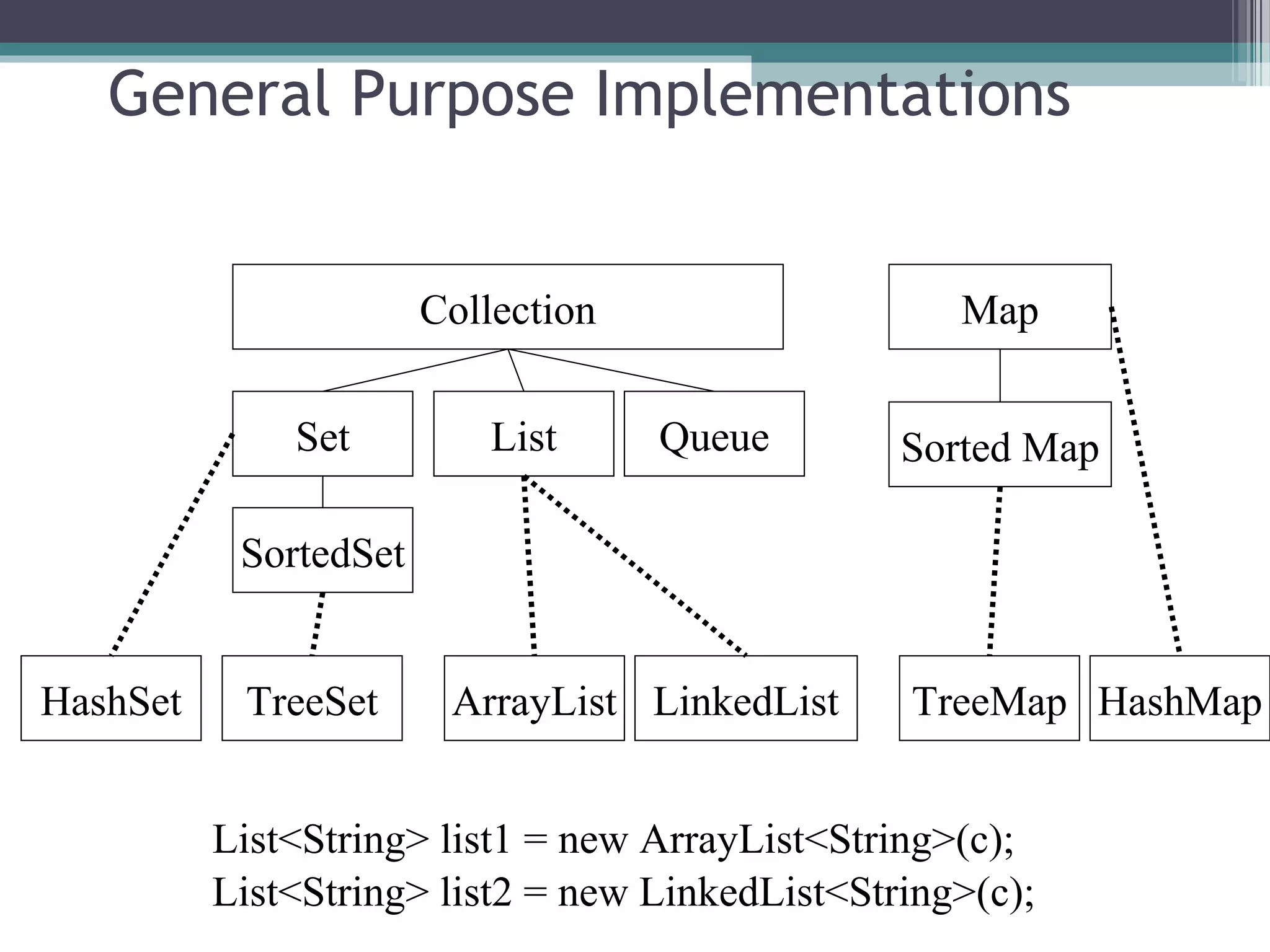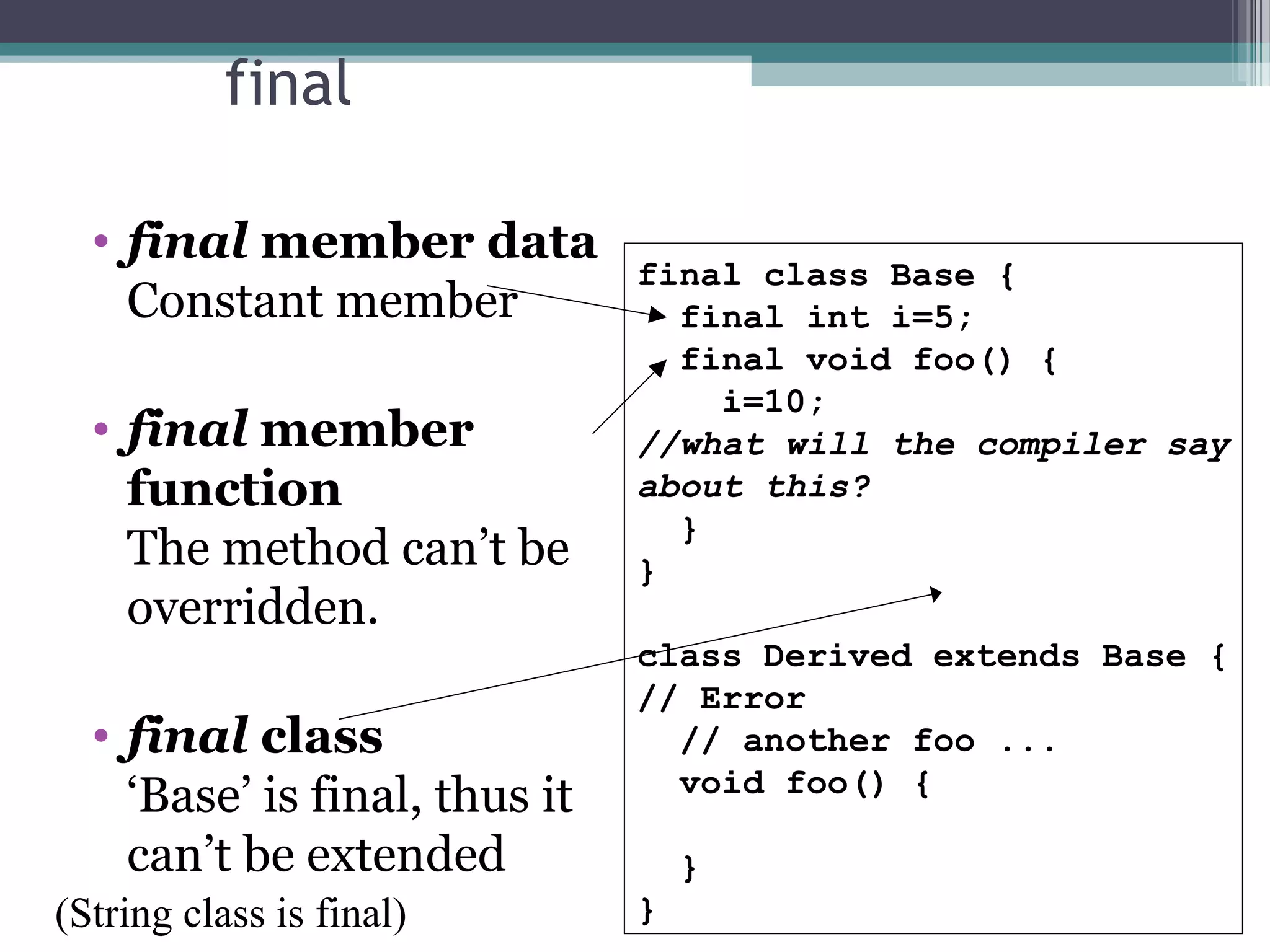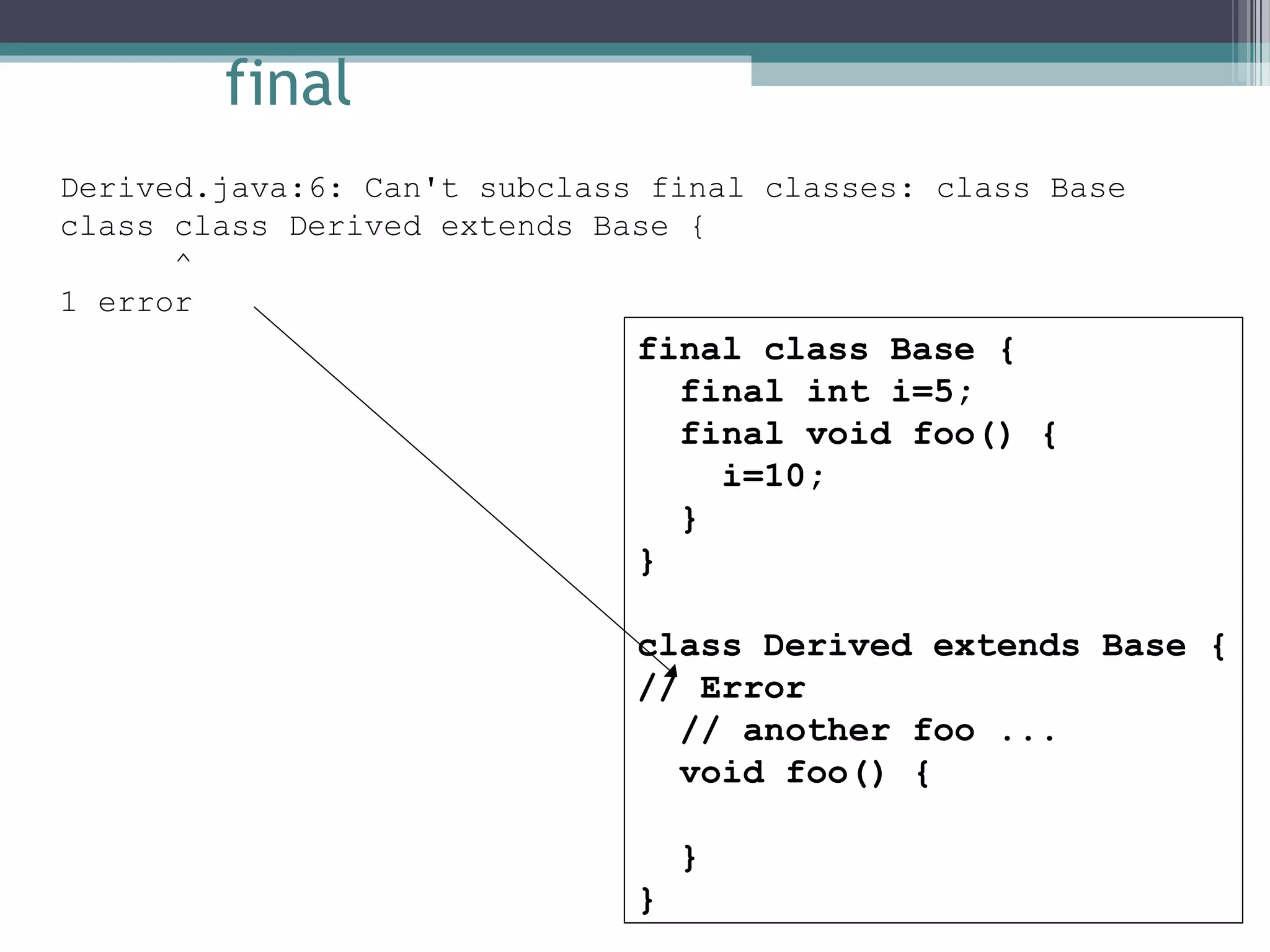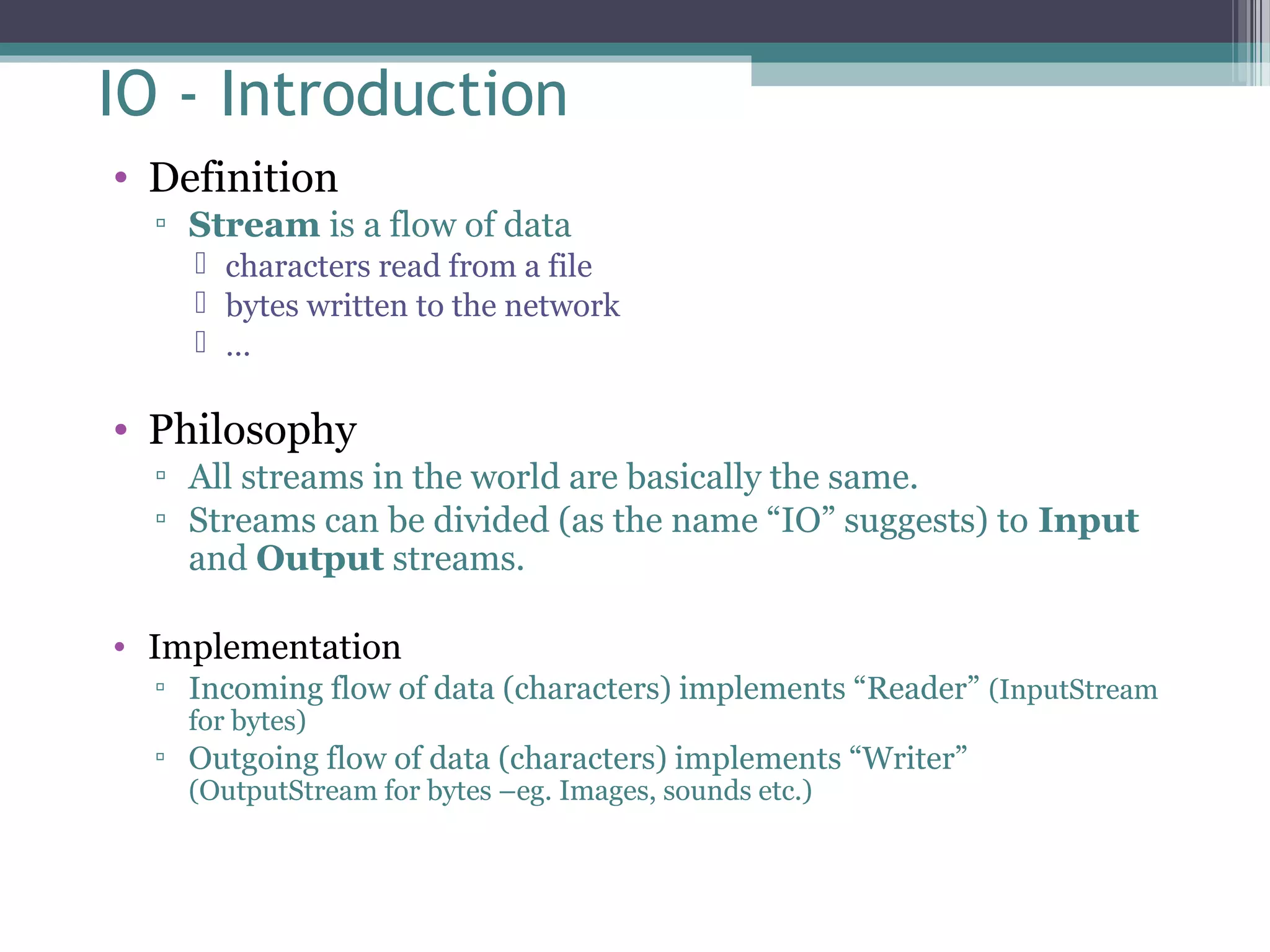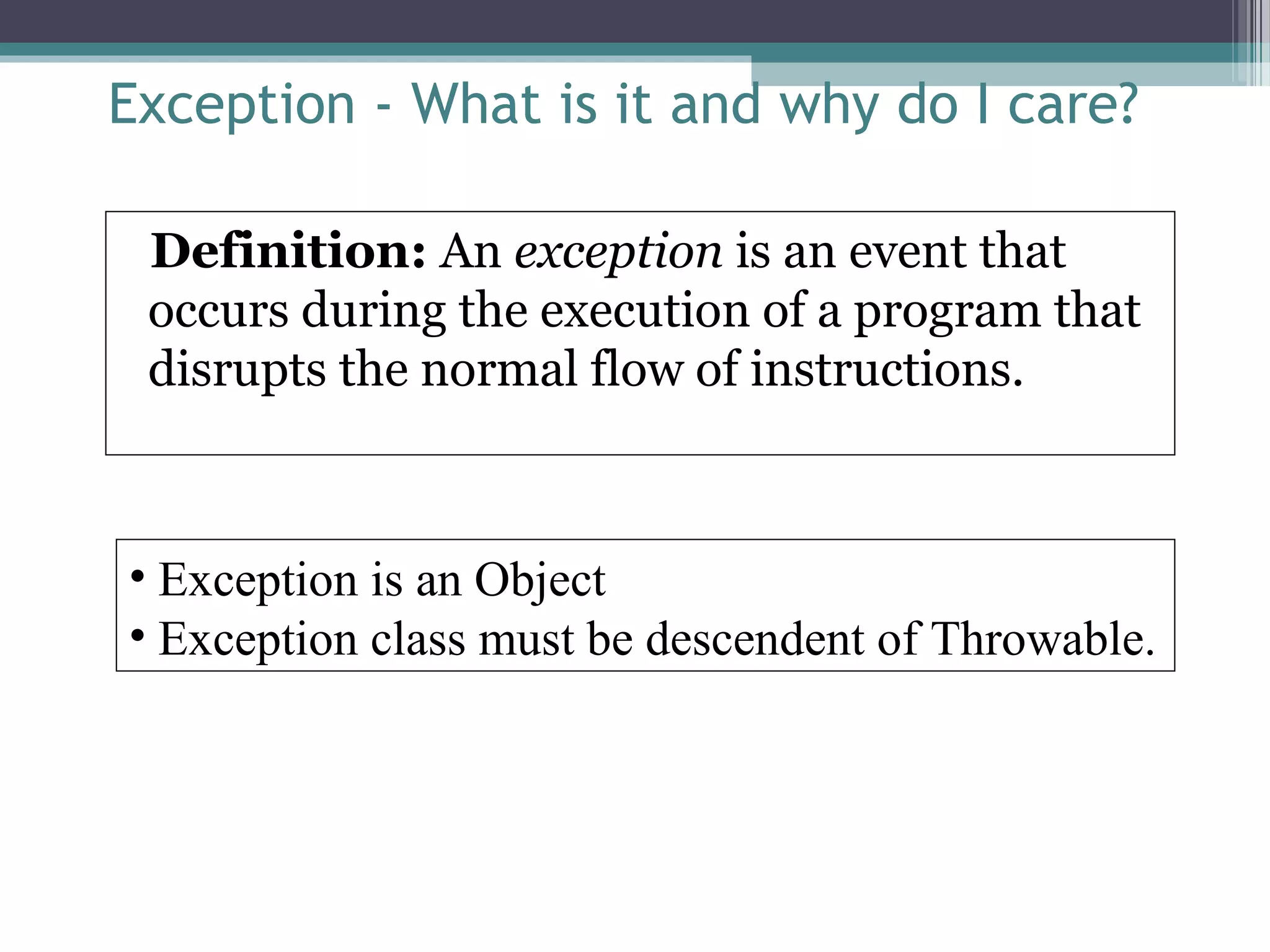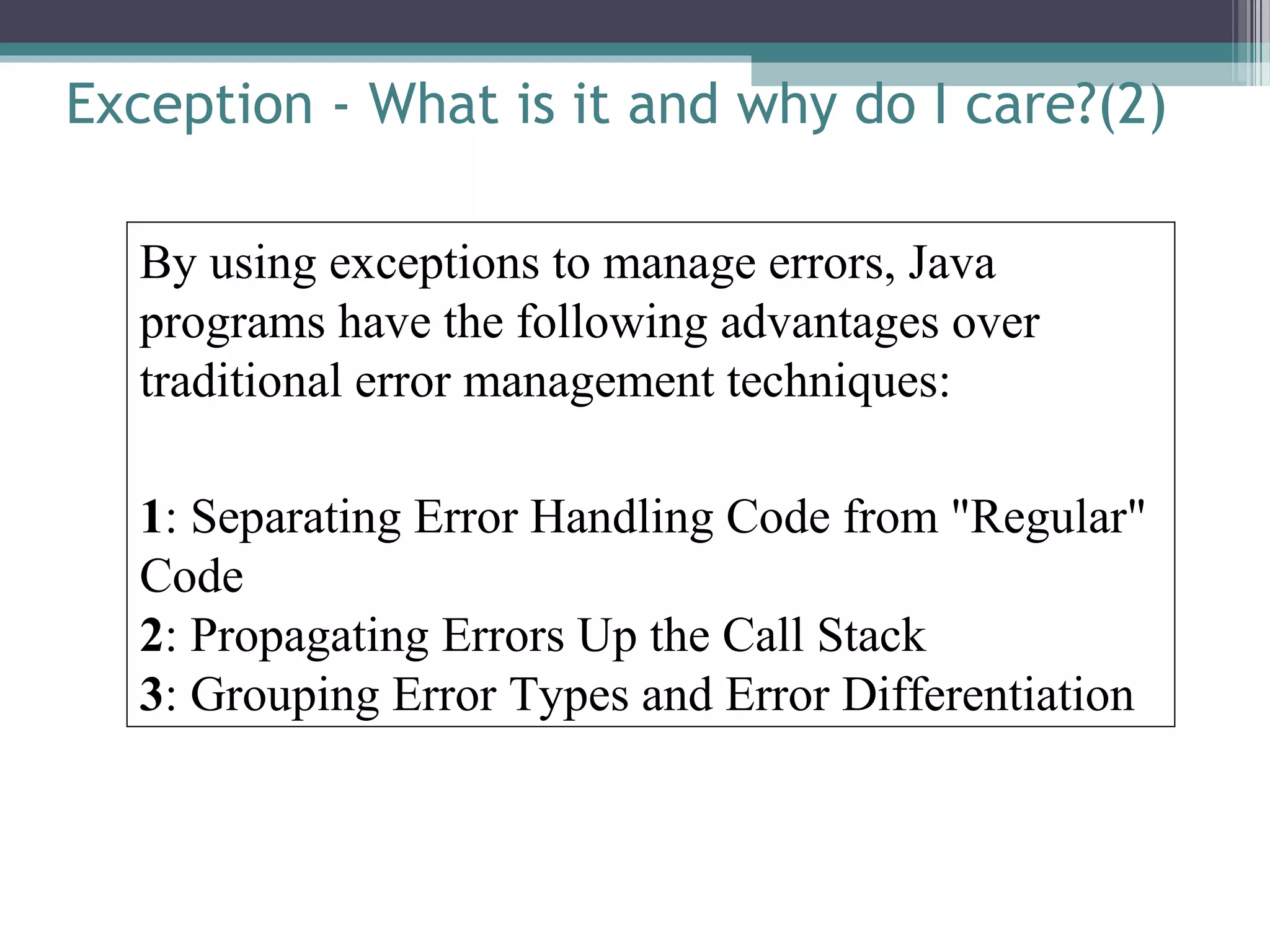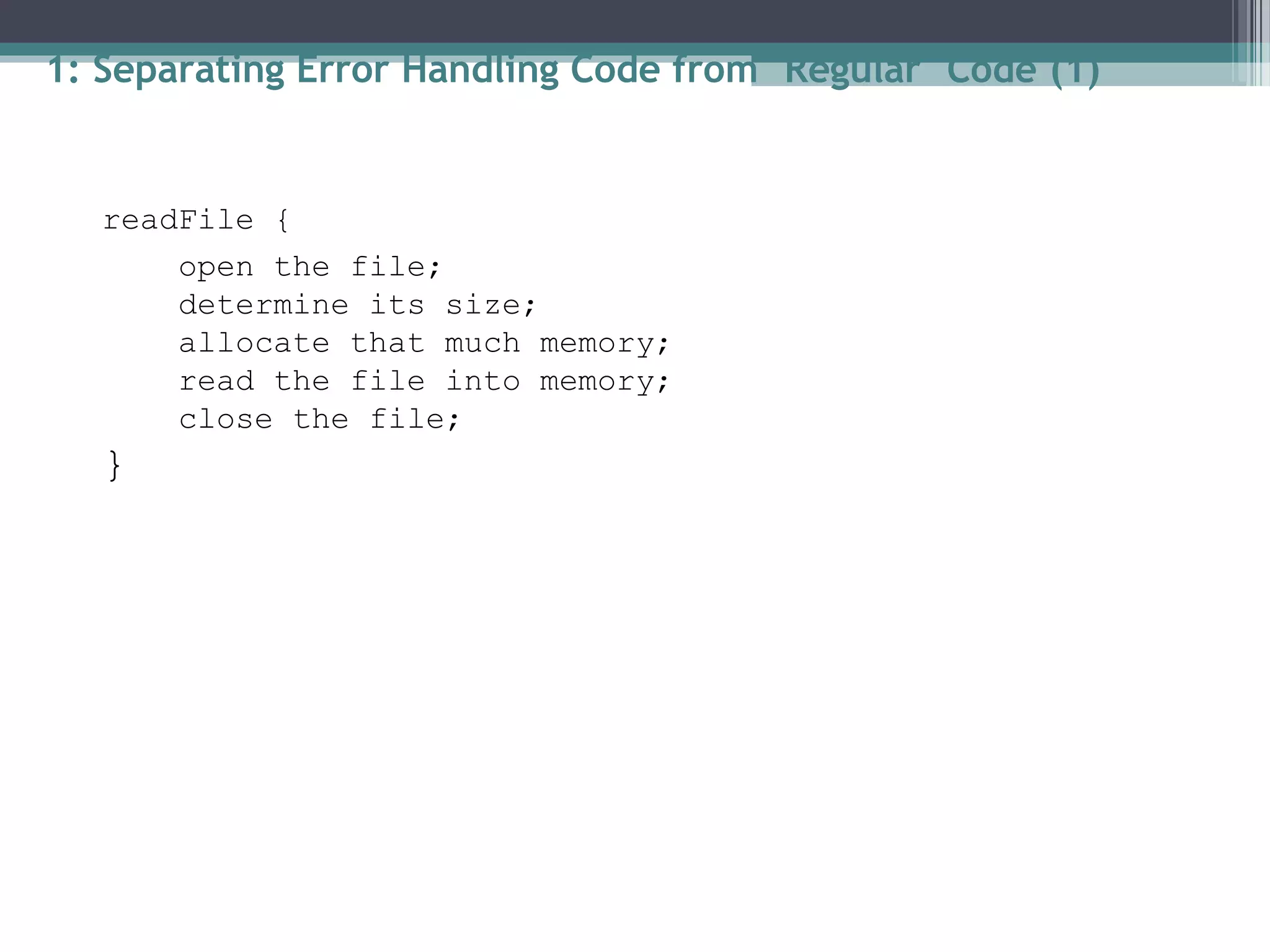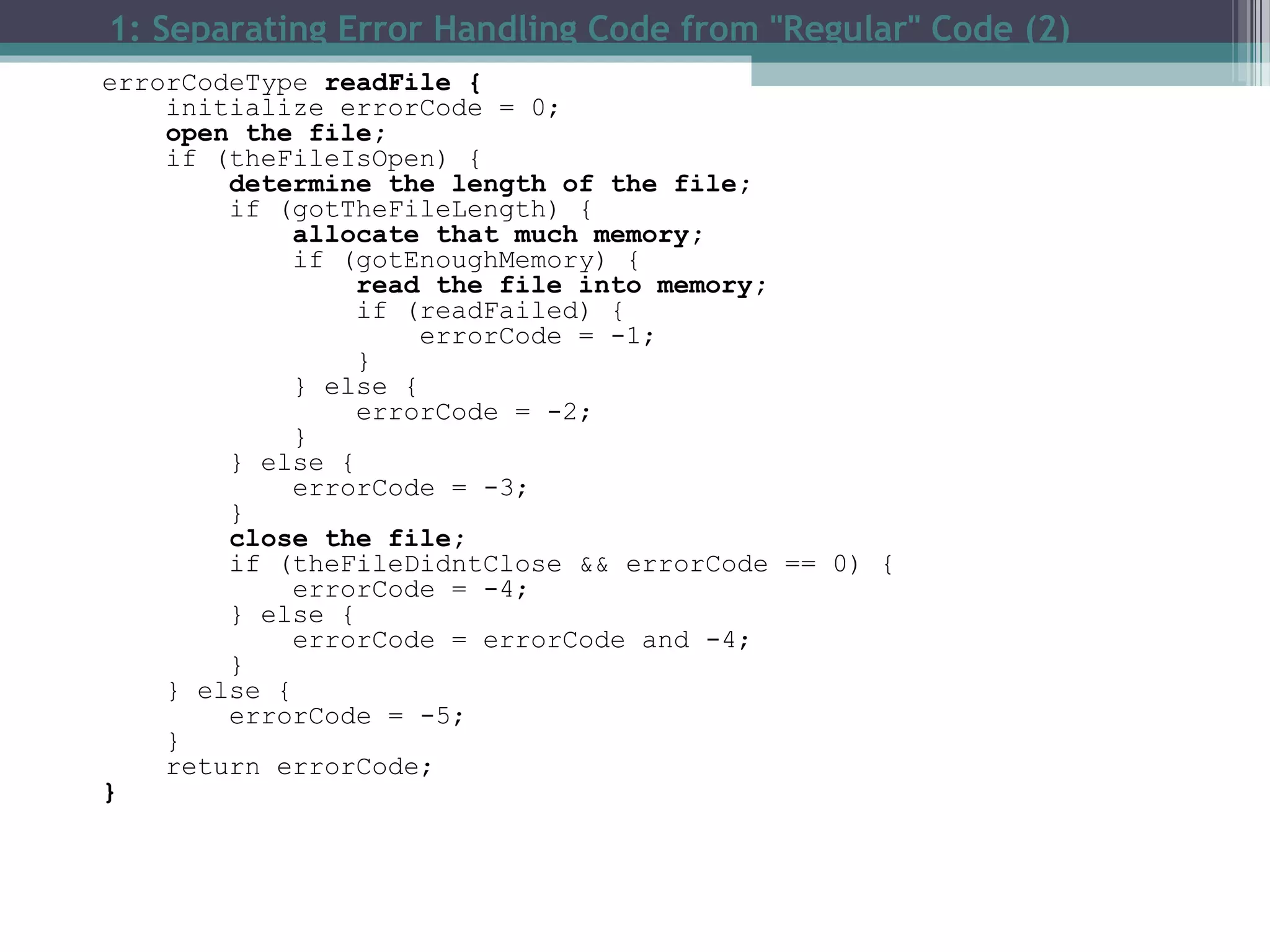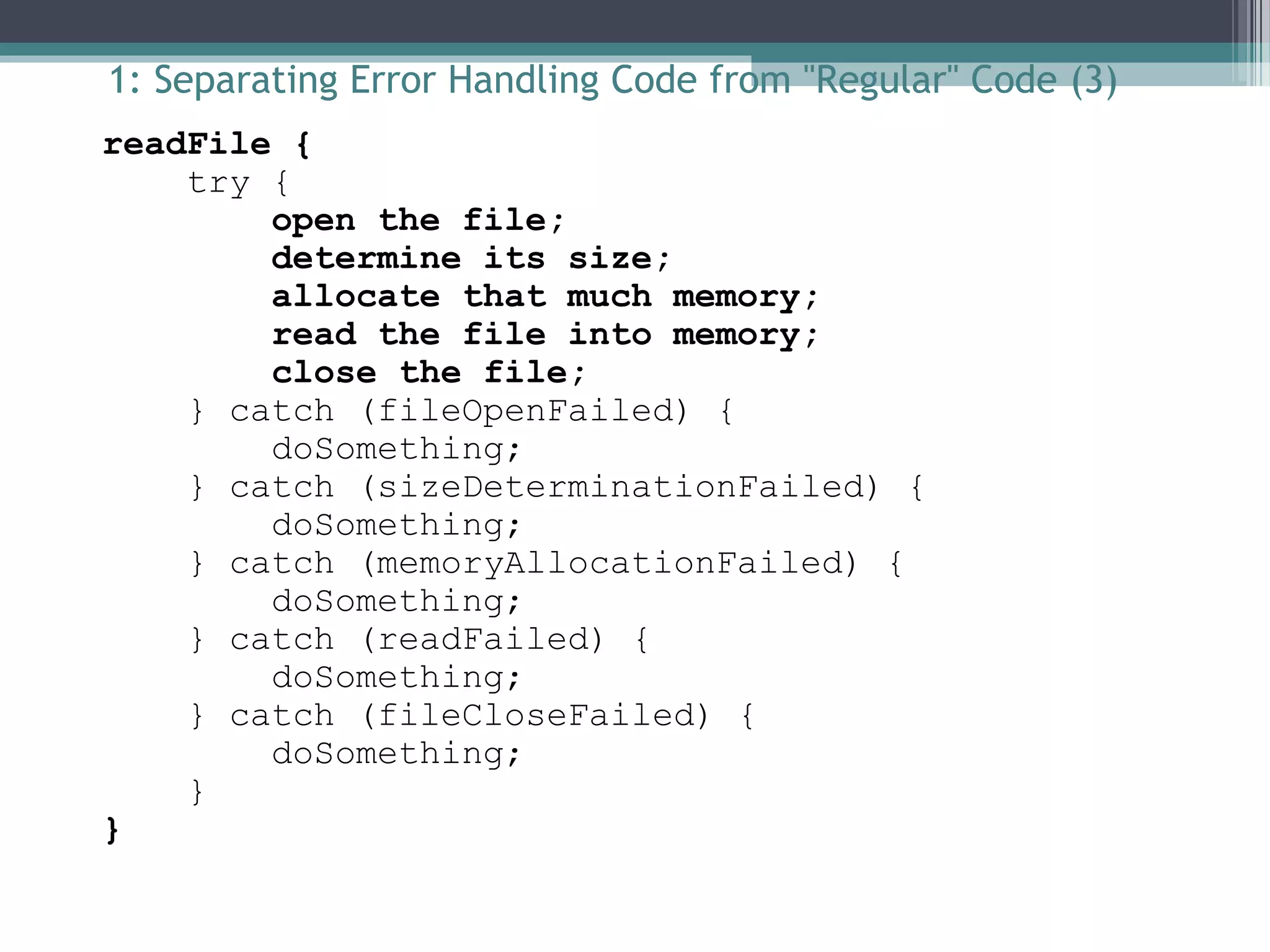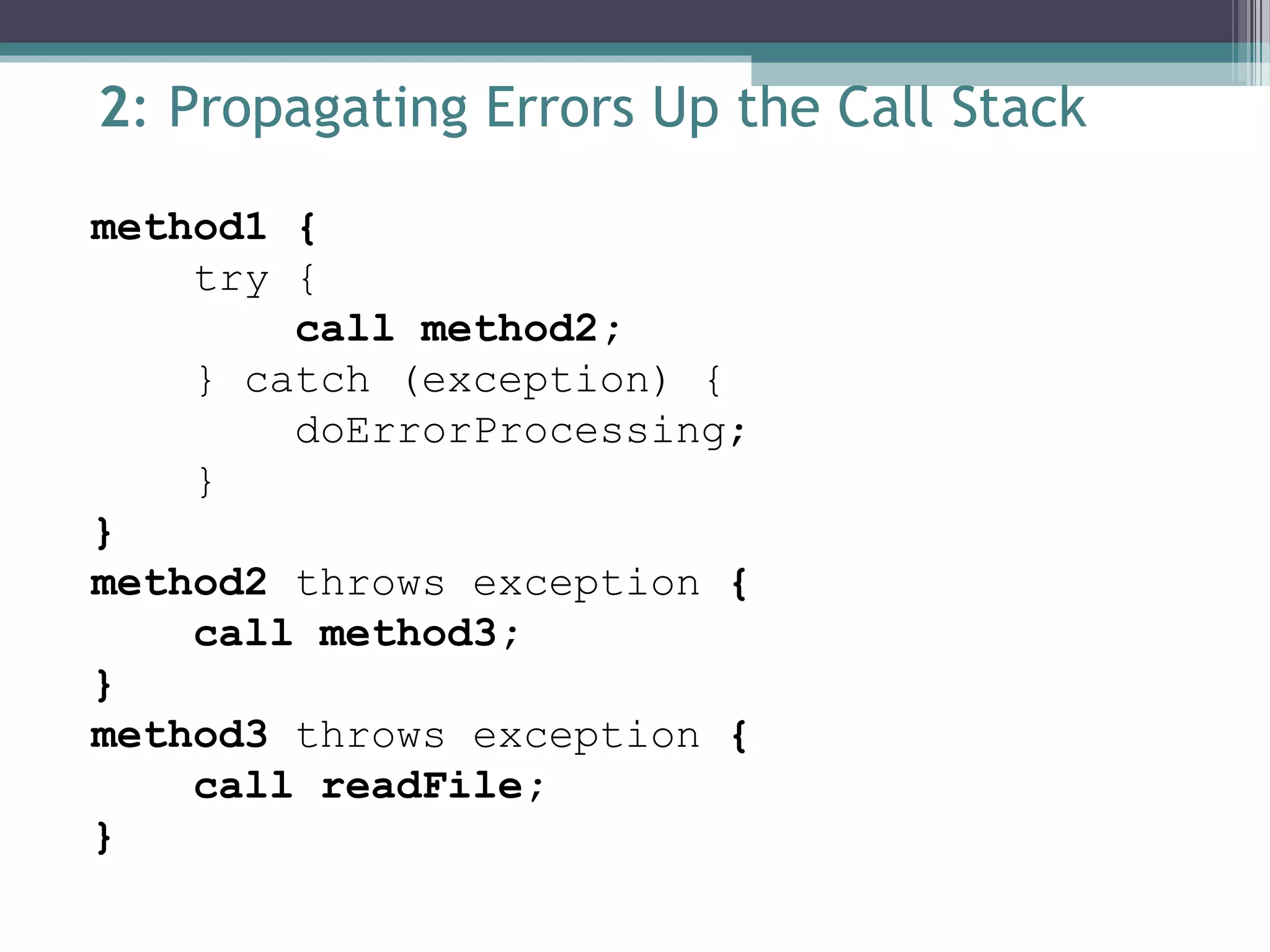The document serves as a comprehensive Java tutorial covering various programming paradigms and core concepts such as object-oriented programming, inheritance, encapsulation, and polymorphism. It explains Java's unique features, including the Java Virtual Machine (JVM), primitive types, and collections, while also illustrating the advantages of using interfaces and exceptions for robust error handling. Additionally, it discusses access control, the significance of static members, and the role of packages in Java's hierarchical structure.

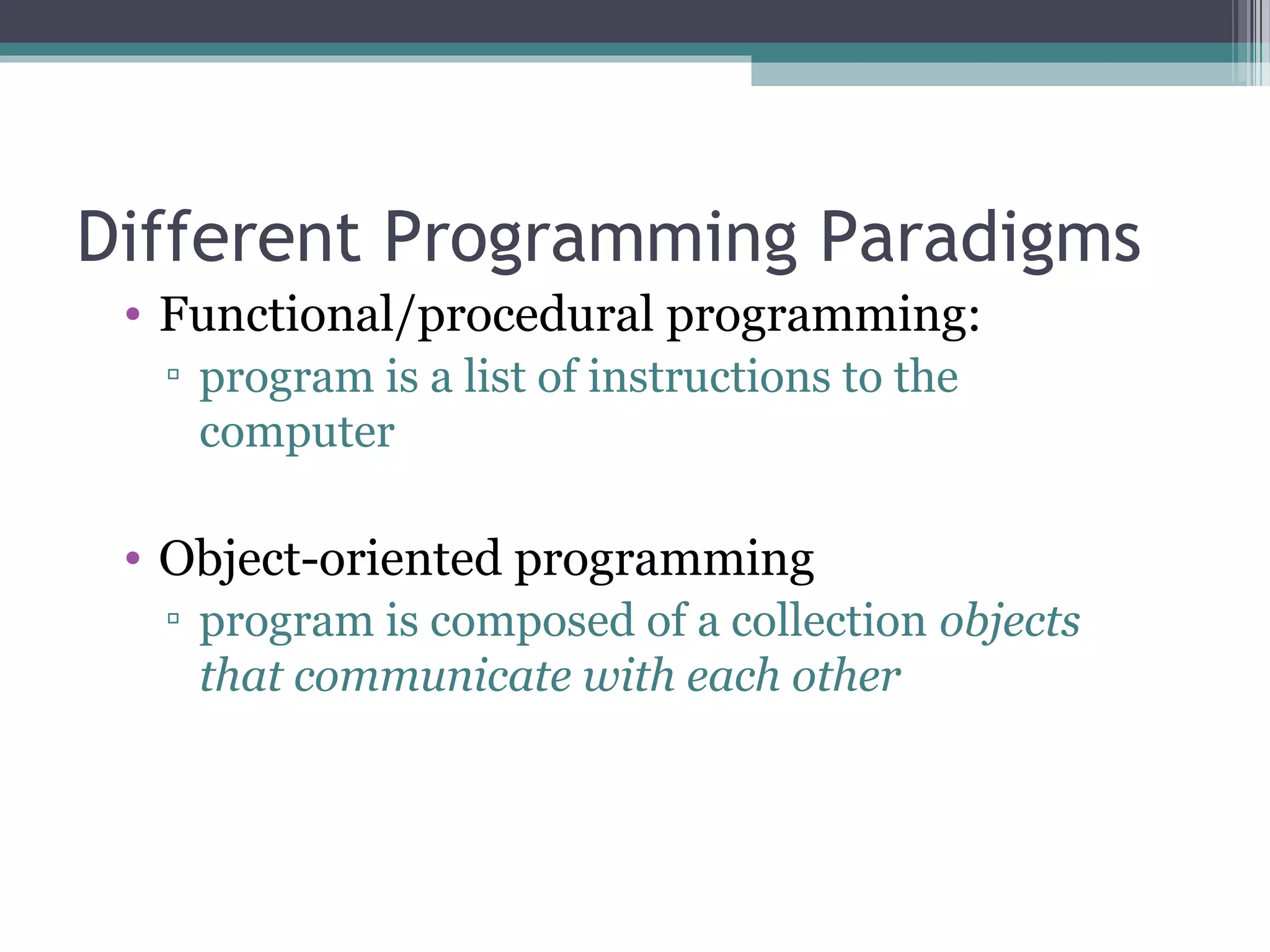
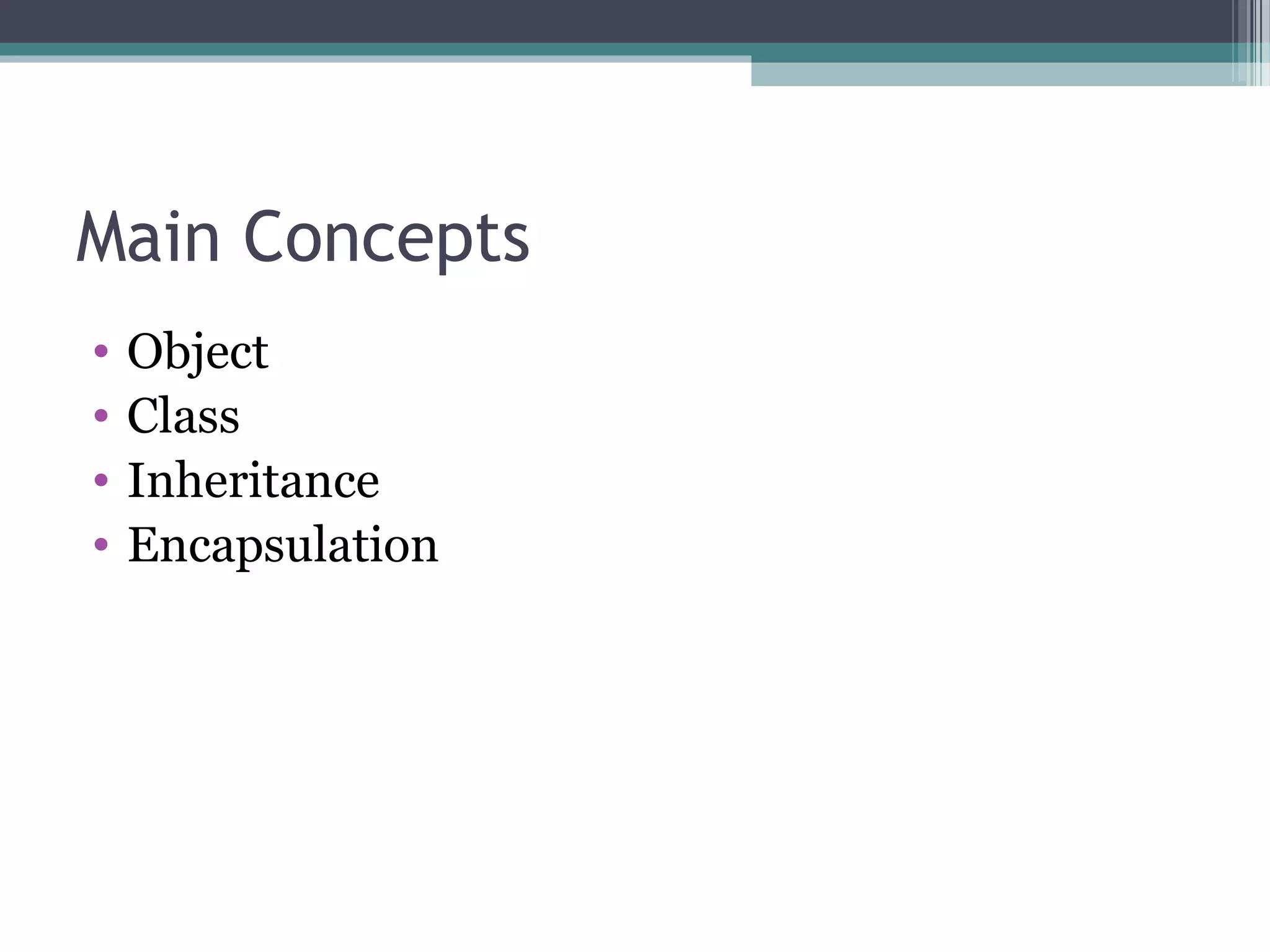
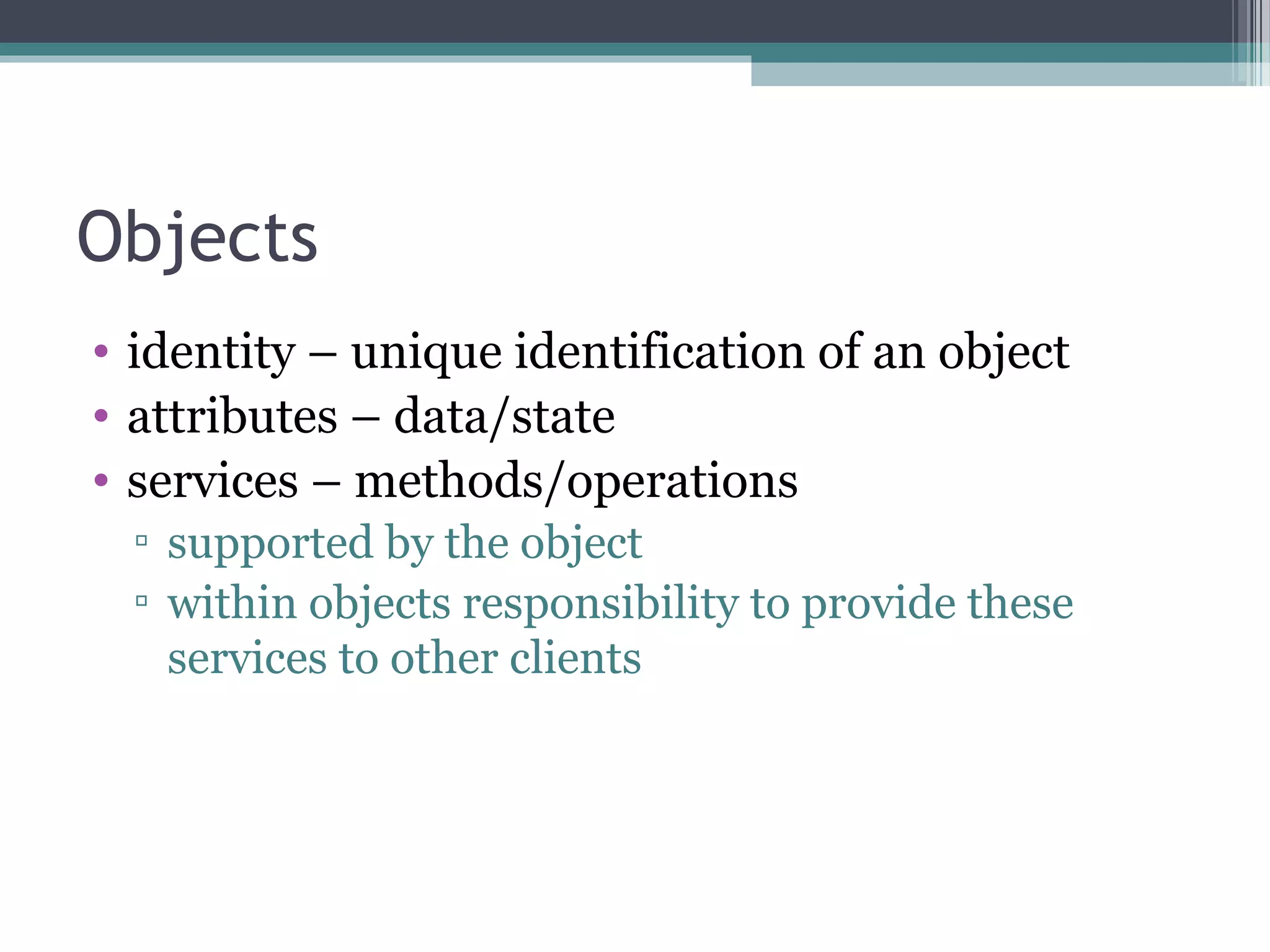
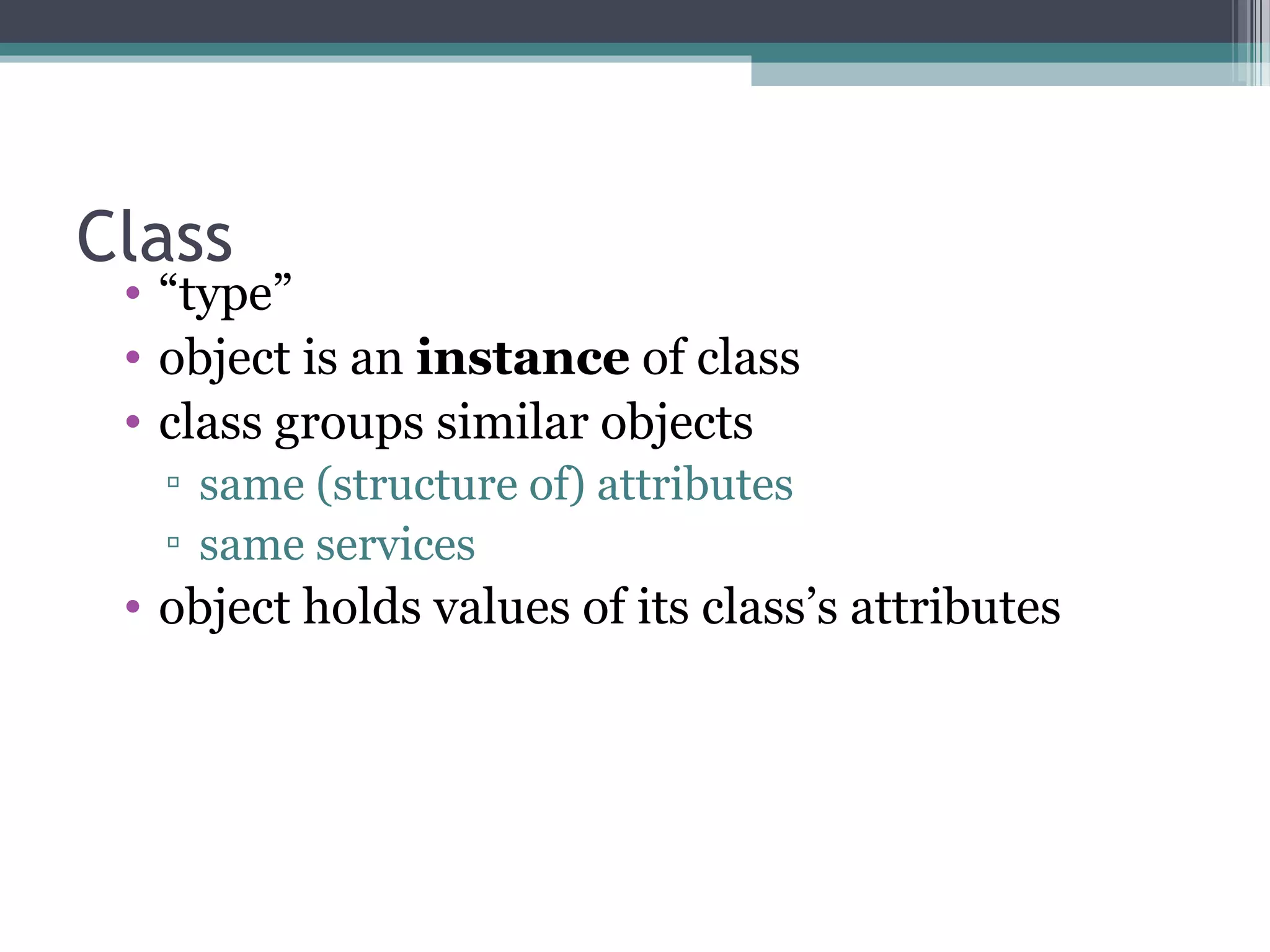
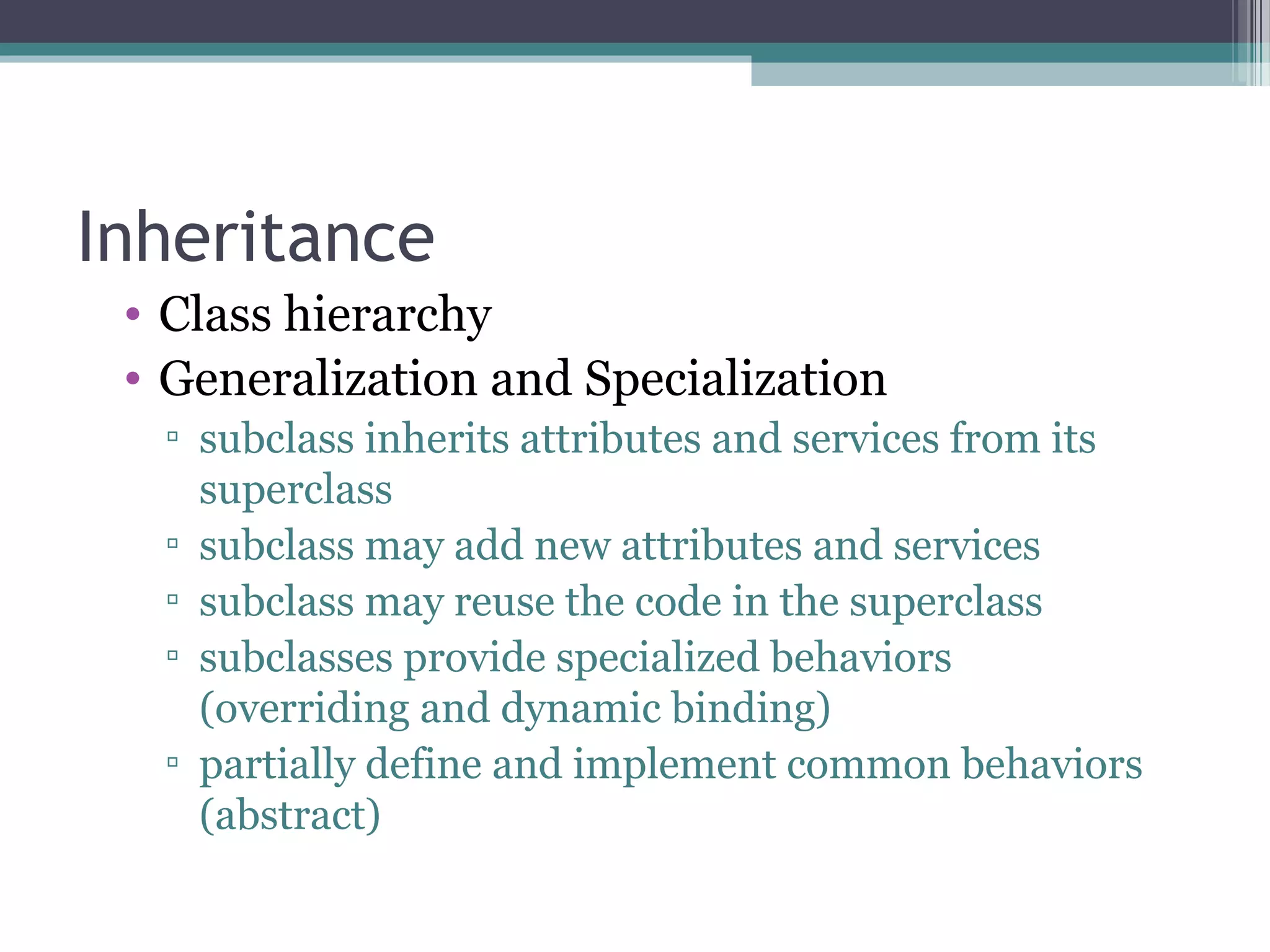
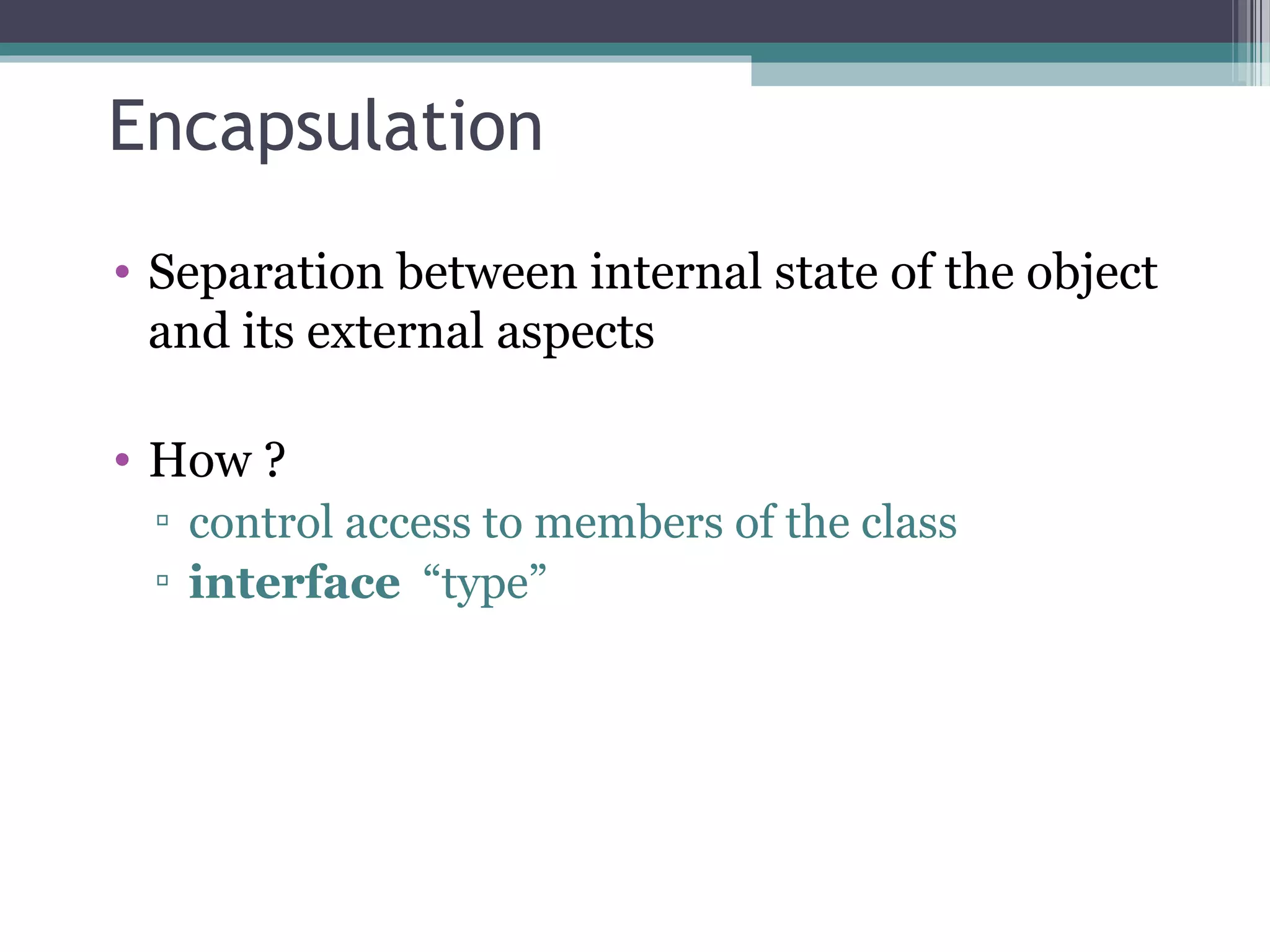
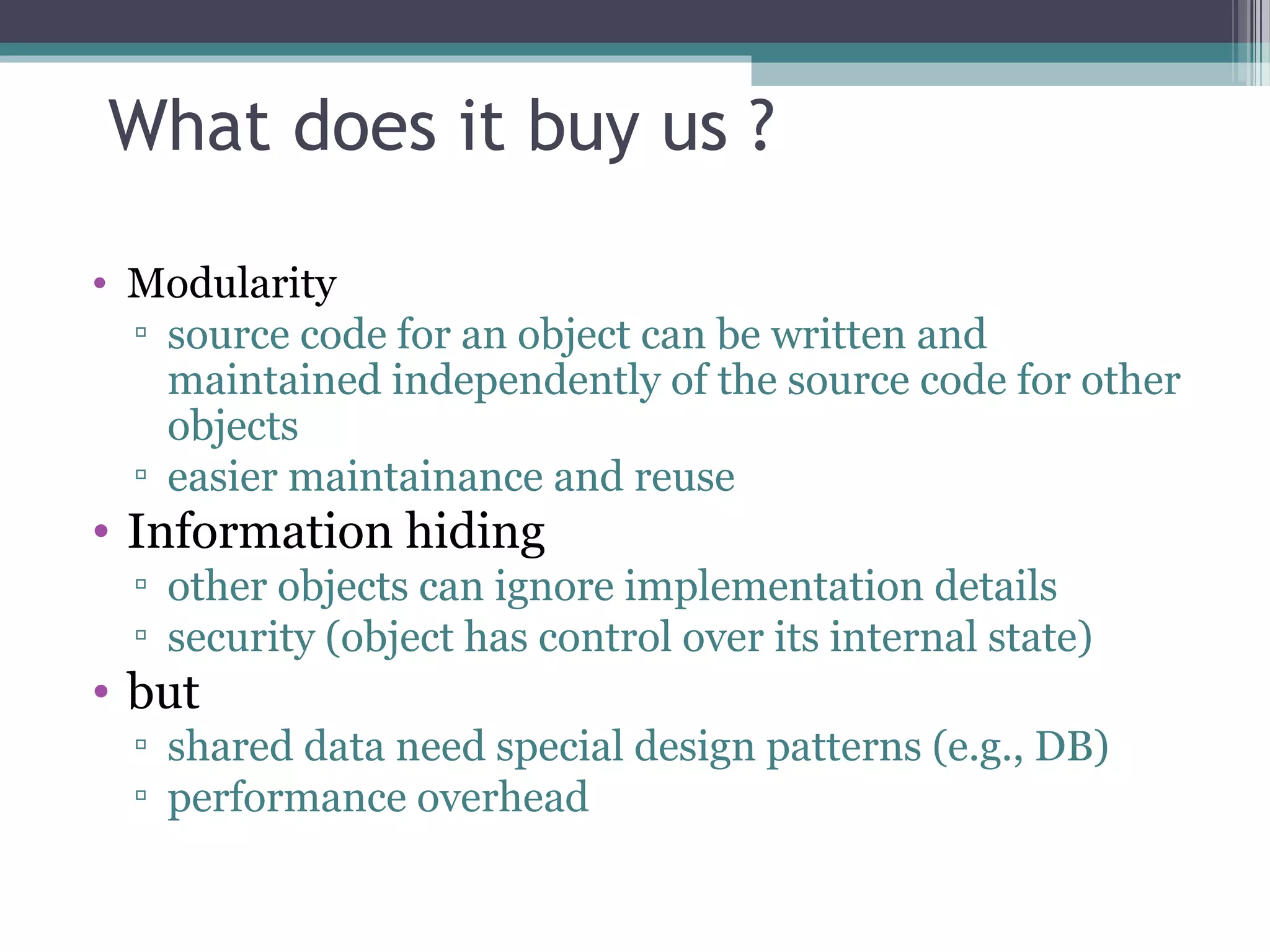
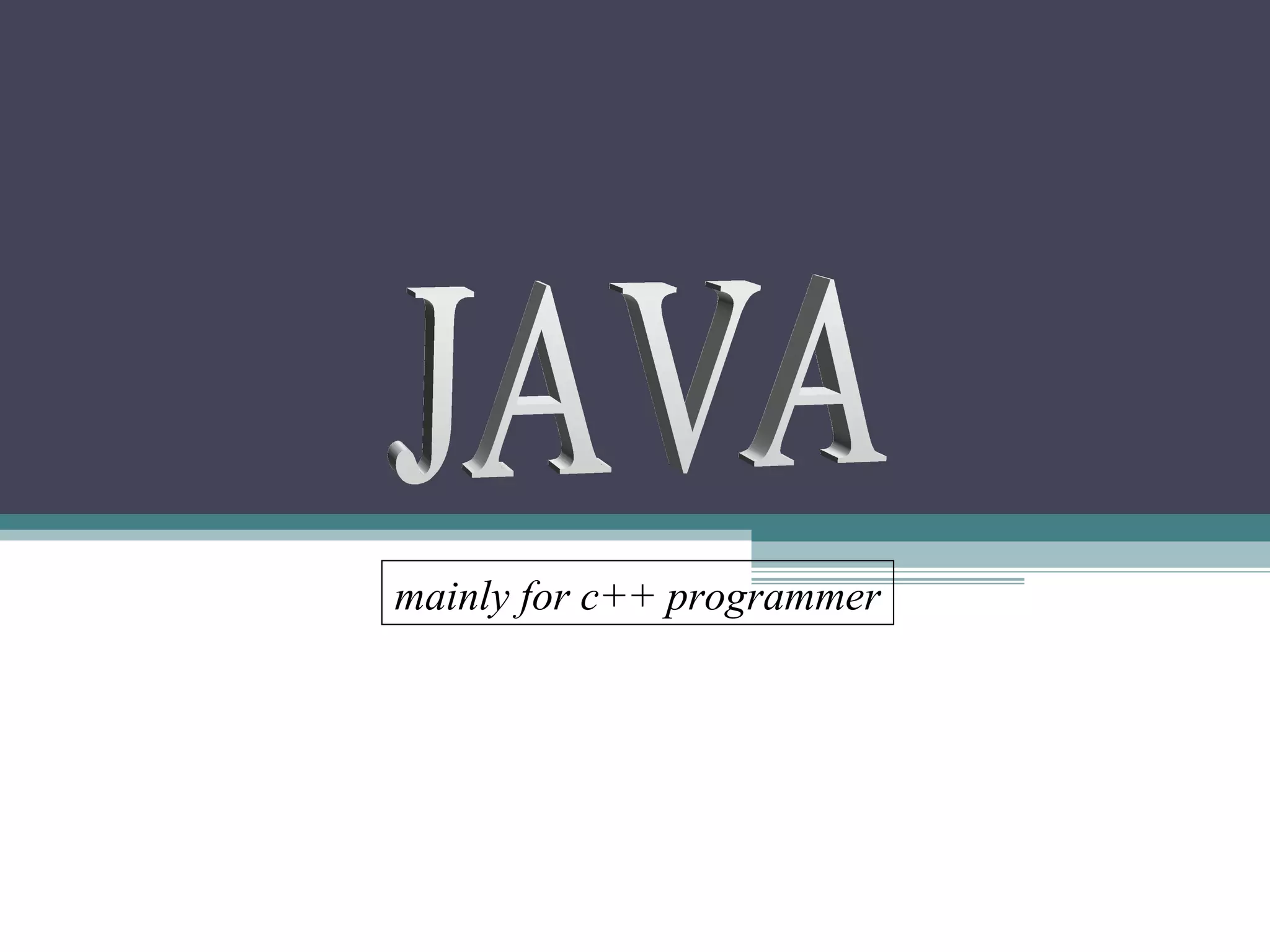
![Why Java ? • Portable • Easy to learn • [ Designed to be used on the Internet ]](https://image.slidesharecdn.com/javatutorials-140512062011-phpapp02/75/Java-Tutorials-10-2048.jpg)
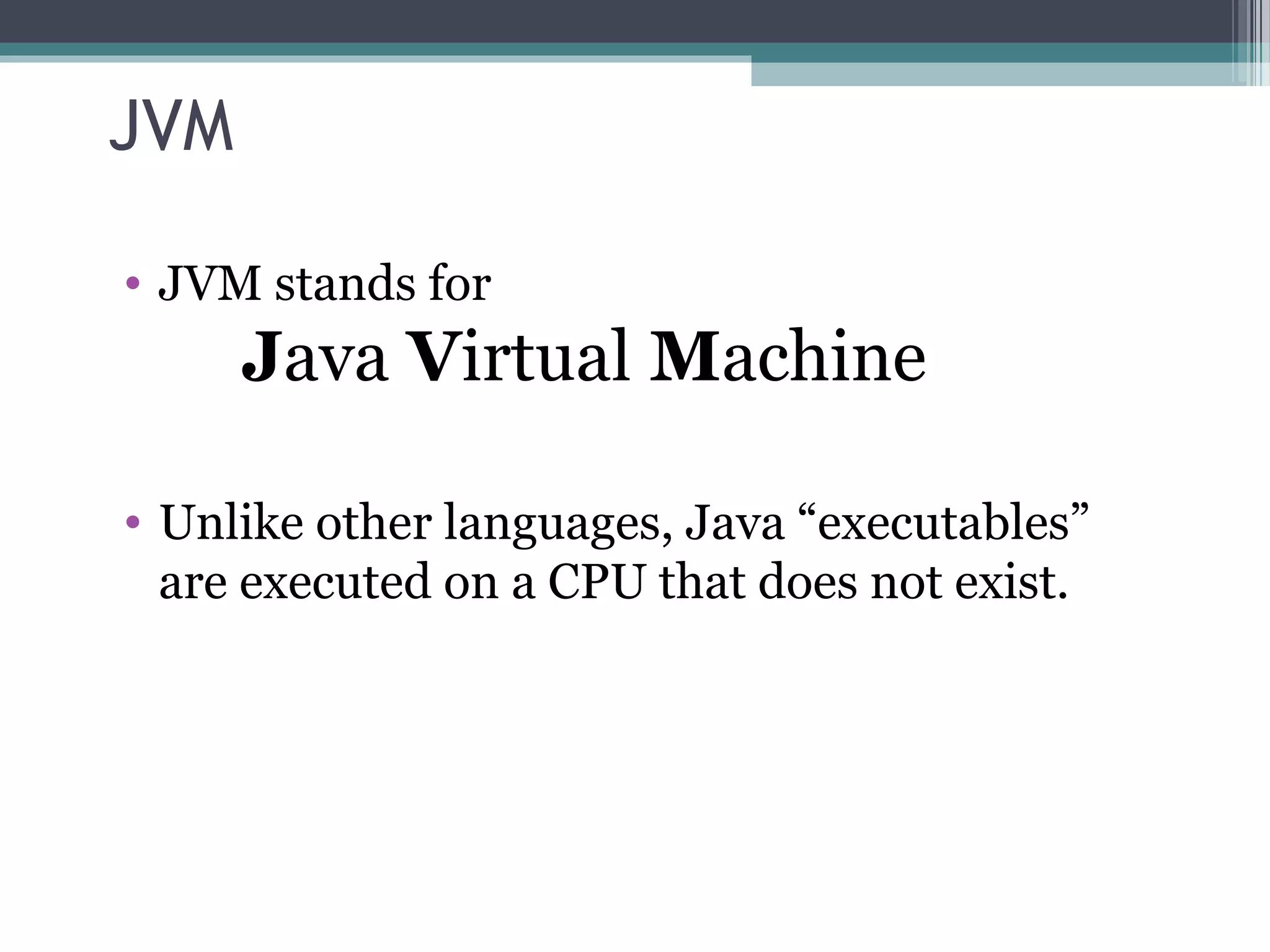
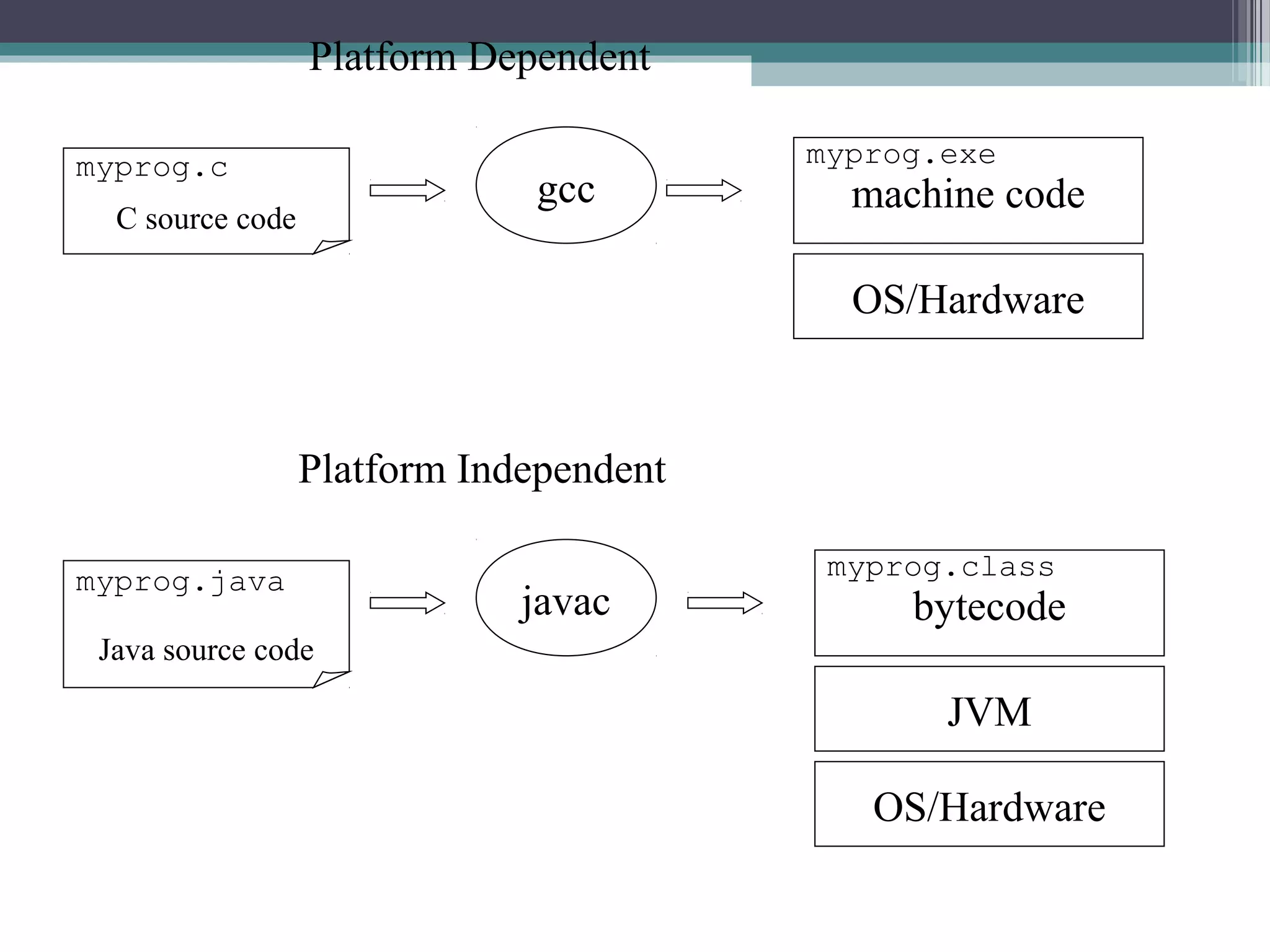
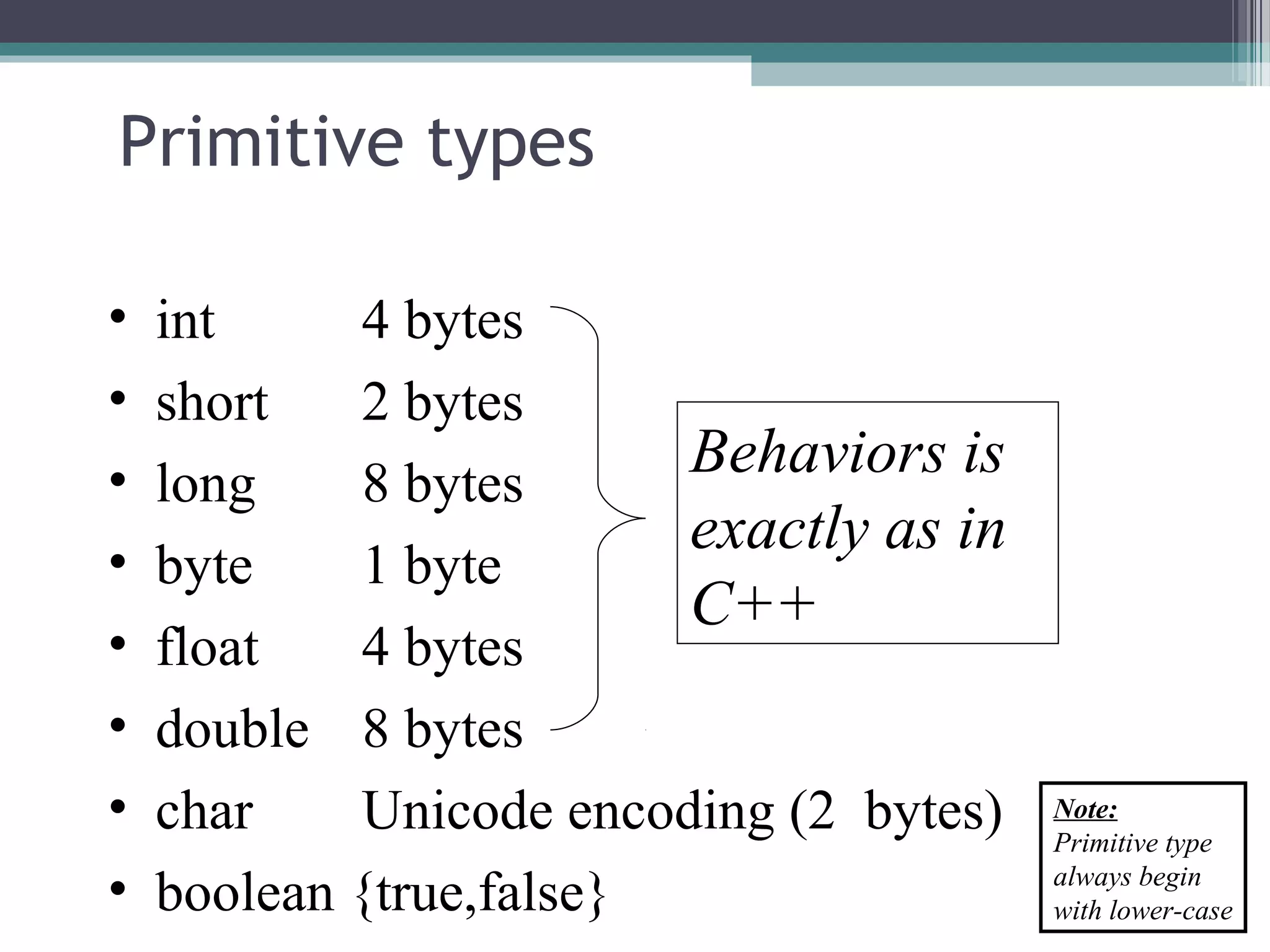
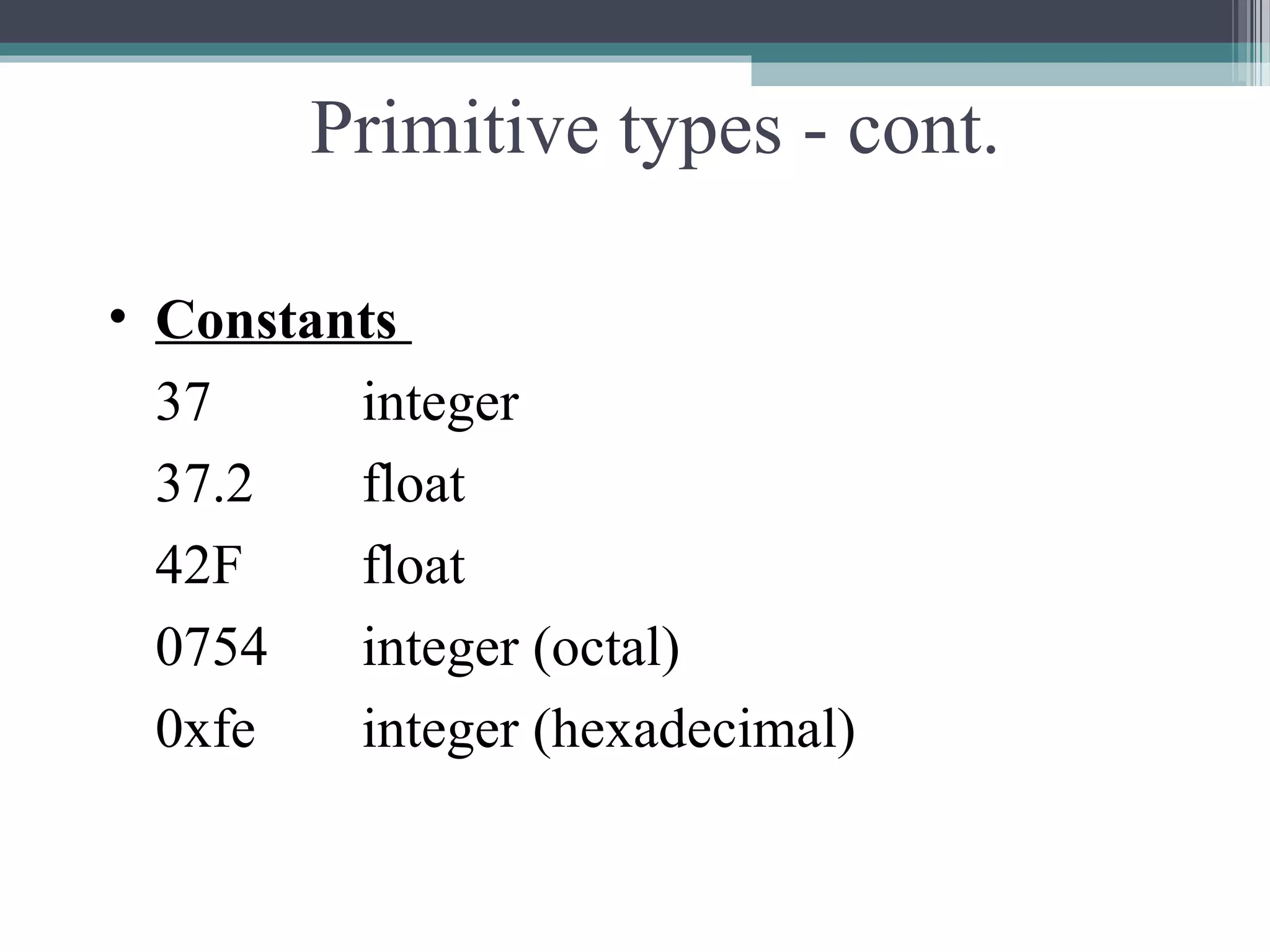
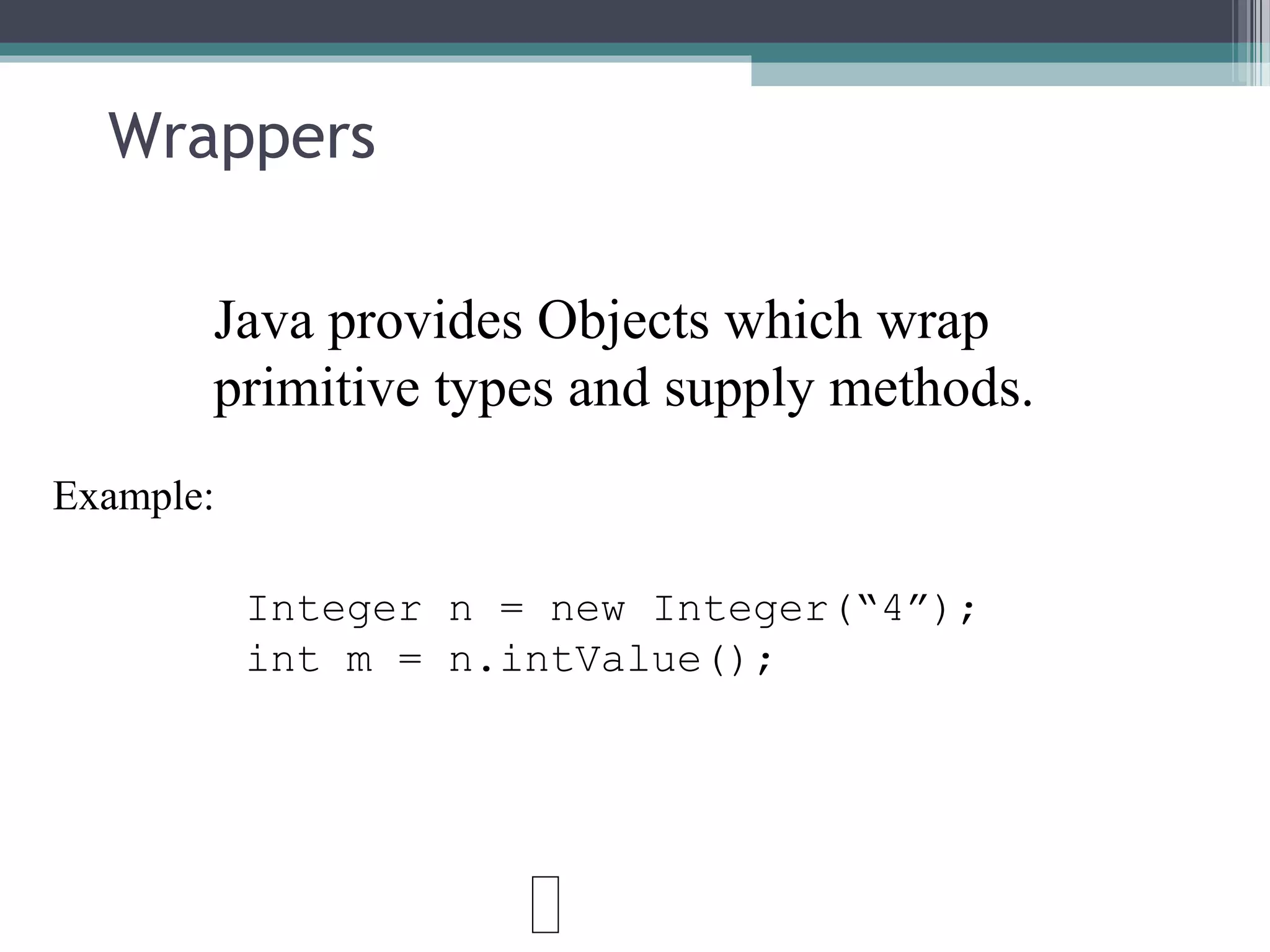
![Arrays • Array is an object • Array size is fixed Animal[] arr; // nothing yet … arr = new Animal[4]; // only array of pointers for(int i=0 ; i < arr.length ; i++) { arr[i] = new Animal(); // now we have a complete array](https://image.slidesharecdn.com/javatutorials-140512062011-phpapp02/75/Java-Tutorials-16-2048.jpg)
![Arrays - Multidimensional • In C++ Animal arr[2][2] Is: • In Java What is the type of the object here ? Animal[][] arr= new Animal[2][2]](https://image.slidesharecdn.com/javatutorials-140512062011-phpapp02/75/Java-Tutorials-17-2048.jpg)
![Static - [1/4] • Member data - Same data is used for all the instances (objects) of some Class. Class A { public int y = 0; public static int x_ = 1; }; A a = new A(); A b = new A(); System.out.println(b.x_); a.x_ = 5; System.out.println(b.x_); A.x_ = 10; System.out.println(b.x_); Assignment performed on the first access to the Class. Only one instance of ‘x’ exists in memory Output: 1 5 10 a b y y A.x_ 0 0 1](https://image.slidesharecdn.com/javatutorials-140512062011-phpapp02/75/Java-Tutorials-18-2048.jpg)
![Static - [2/4] • Member function ▫ Static member function can access only static members ▫ Static member function can be called without an instance. Class TeaPot { private static int numOfTP = 0; private Color myColor_; public TeaPot(Color c) { myColor_ = c; numOfTP++; } public static int howManyTeaPots() { return numOfTP; } // error : public static Color getColor() { return myColor_; } }](https://image.slidesharecdn.com/javatutorials-140512062011-phpapp02/75/Java-Tutorials-19-2048.jpg)
![Static - [2/4] cont. Usage: TeaPot tp1 = new TeaPot(Color.RED); TeaPot tp2 = new TeaPot(Color.GREEN); System.out.println(“We have “ + TeaPot.howManyTeaPots()+ “Tea Pots”);](https://image.slidesharecdn.com/javatutorials-140512062011-phpapp02/75/Java-Tutorials-20-2048.jpg)
![Static - [3/4] • Block ▫ Code that is executed in the first reference to the class. ▫ Several static blocks can exist in the same class ( Execution order is by the appearance order in the class definition ). ▫ Only static members can be accessed. class RandomGenerator { private static int seed_; static { int t = System.getTime() % 100; seed_ = System.getTime(); while(t-- > 0) seed_ = getNextNumber(seed_); } } }](https://image.slidesharecdn.com/javatutorials-140512062011-phpapp02/75/Java-Tutorials-21-2048.jpg)
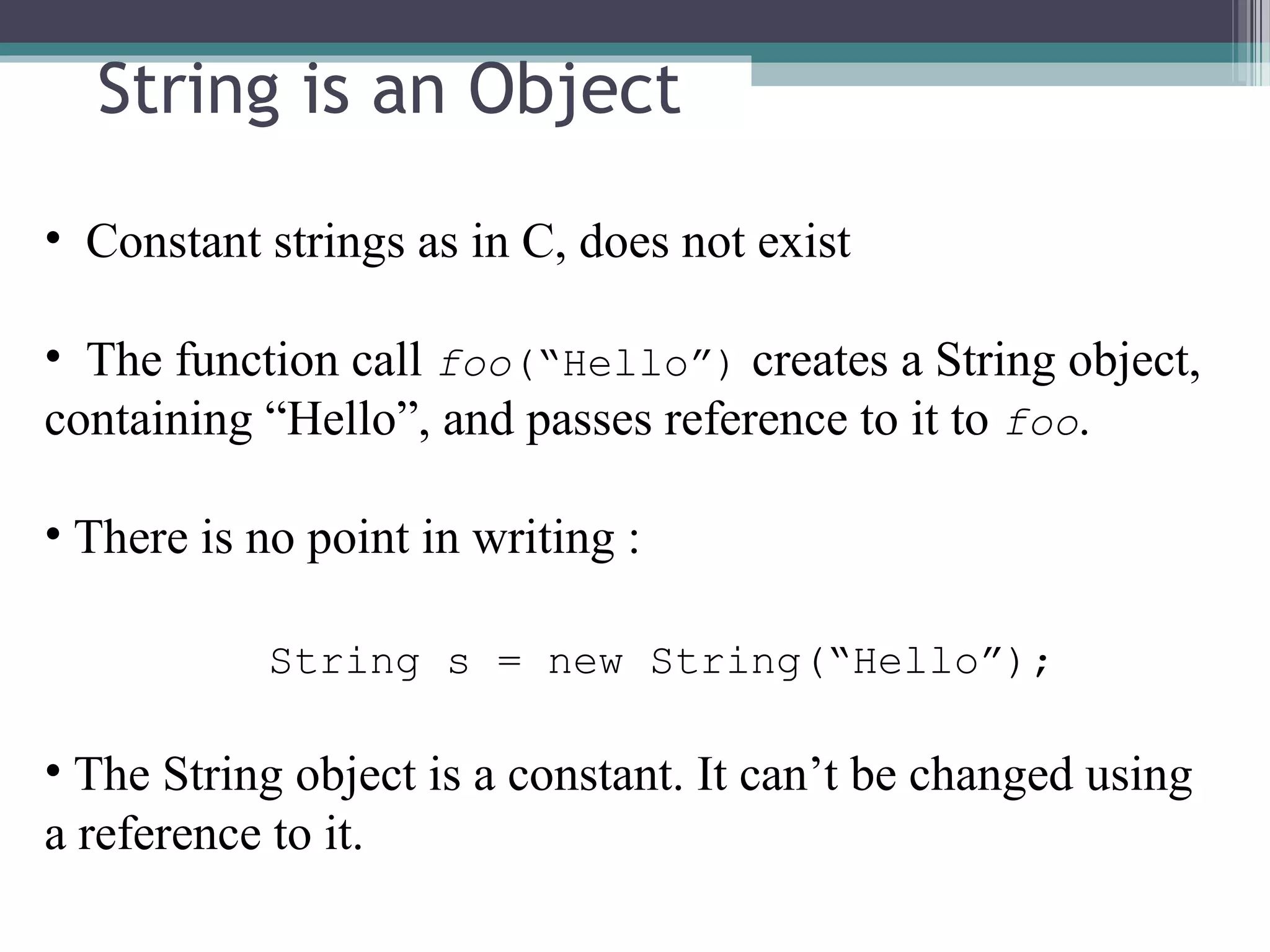
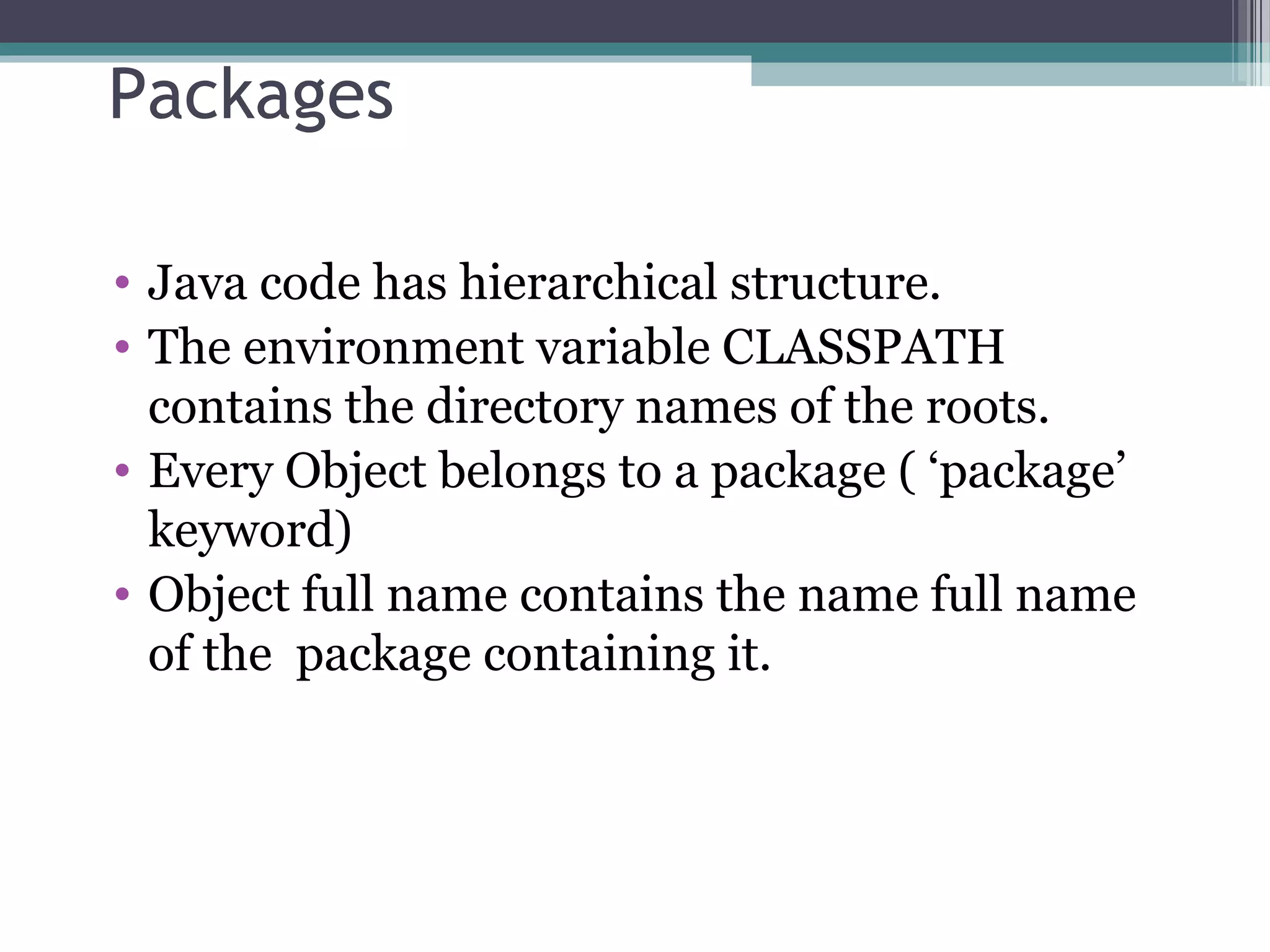
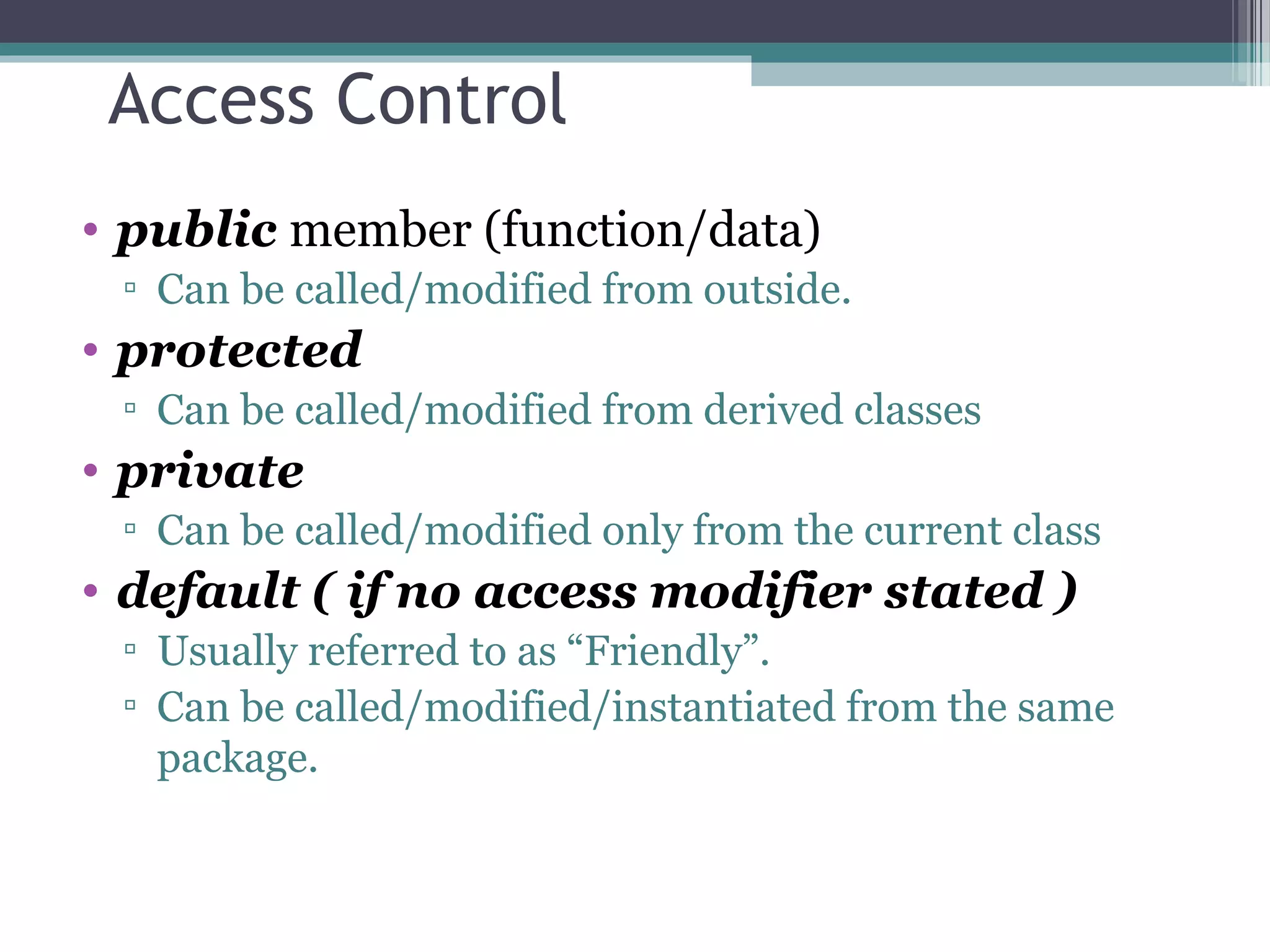
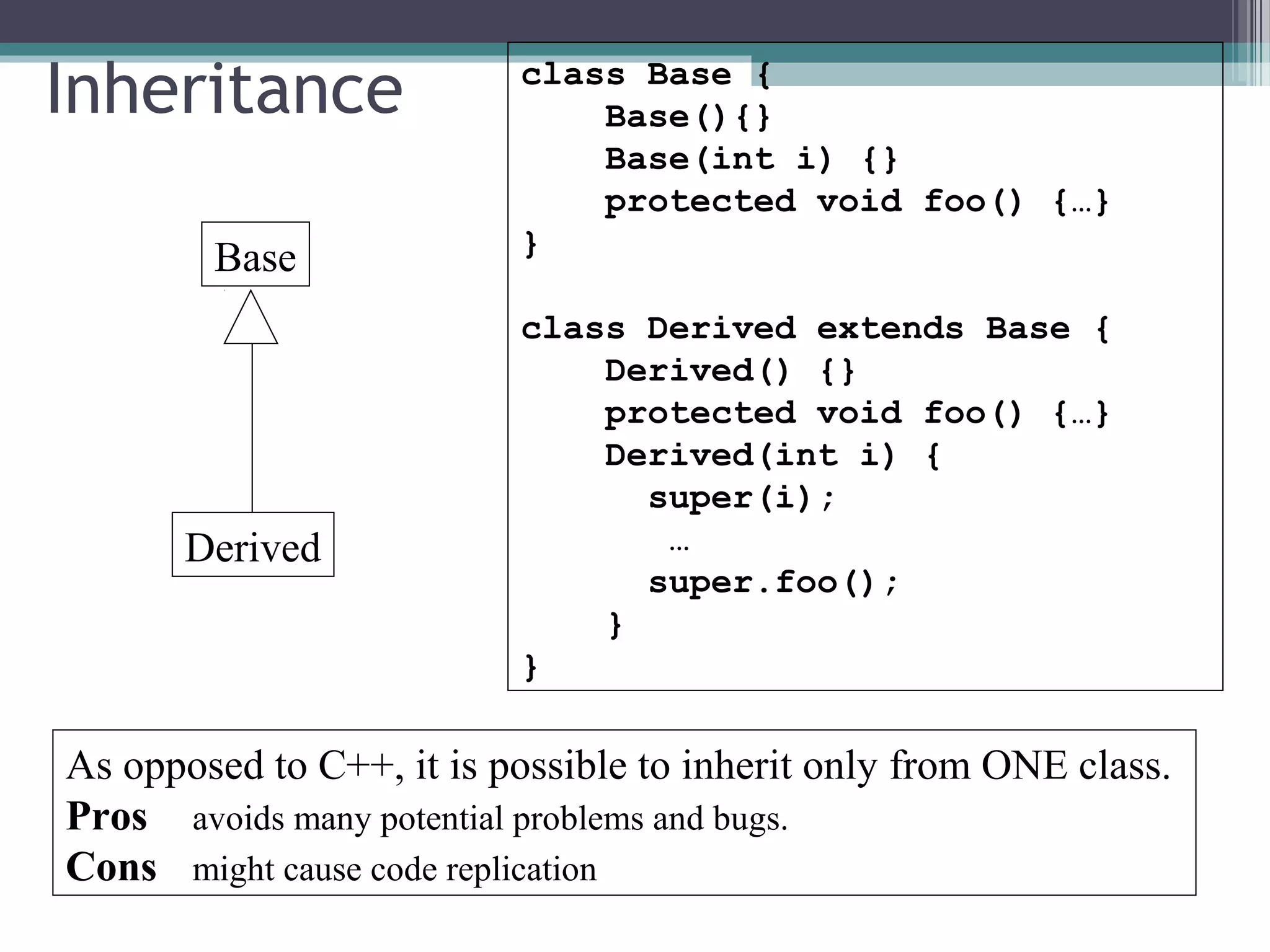
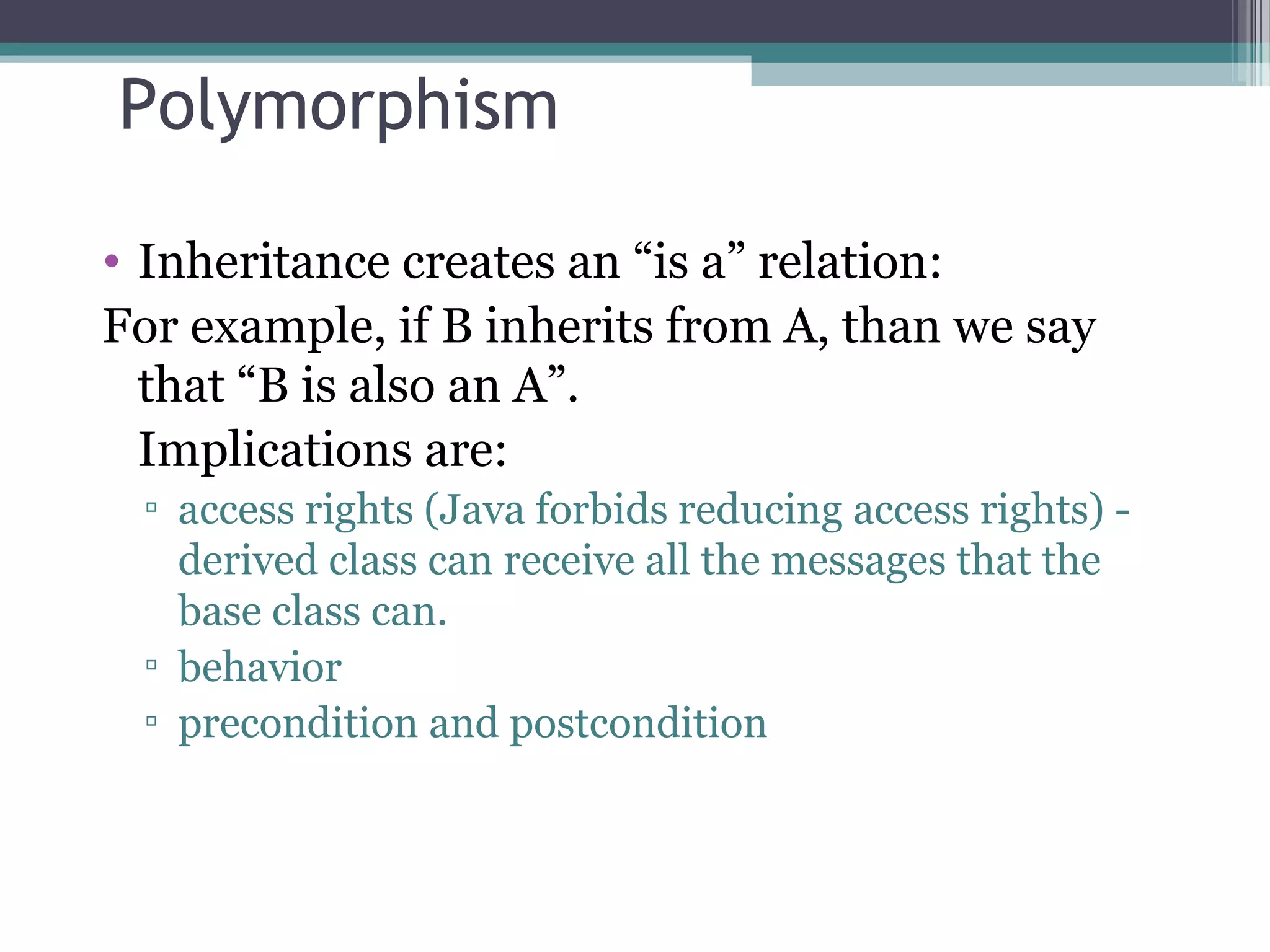
![Inheritance (2) • In Java, all methods are virtual : class Base { void foo() { System.out.println(“Base”); } } class Derived extends Base { void foo() { System.out.println(“Derived”); } } public class Test { public static void main(String[] args) { Base b = new Derived(); b.foo(); // Derived.foo() will be activated } }](https://image.slidesharecdn.com/javatutorials-140512062011-phpapp02/75/Java-Tutorials-27-2048.jpg)
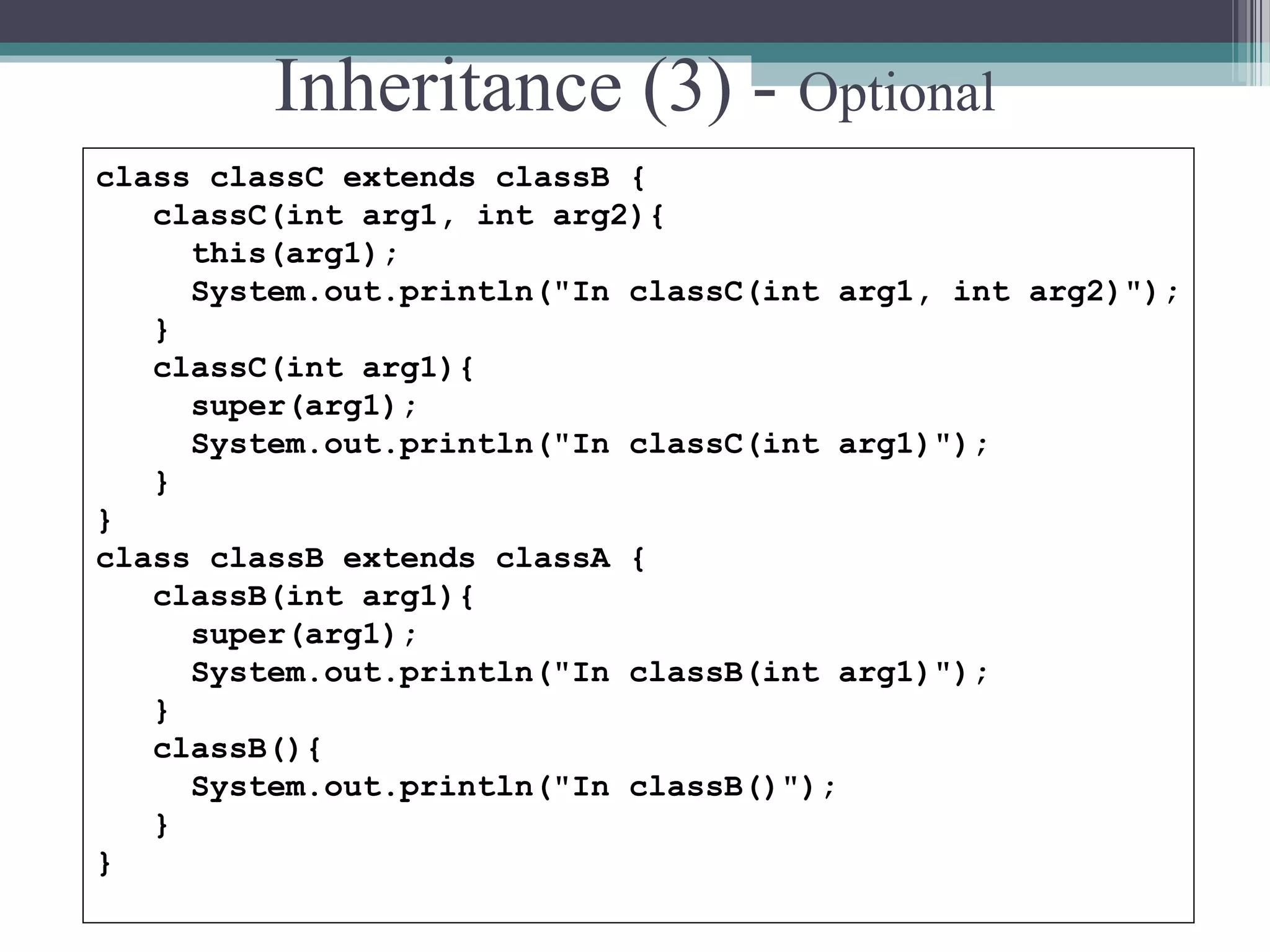
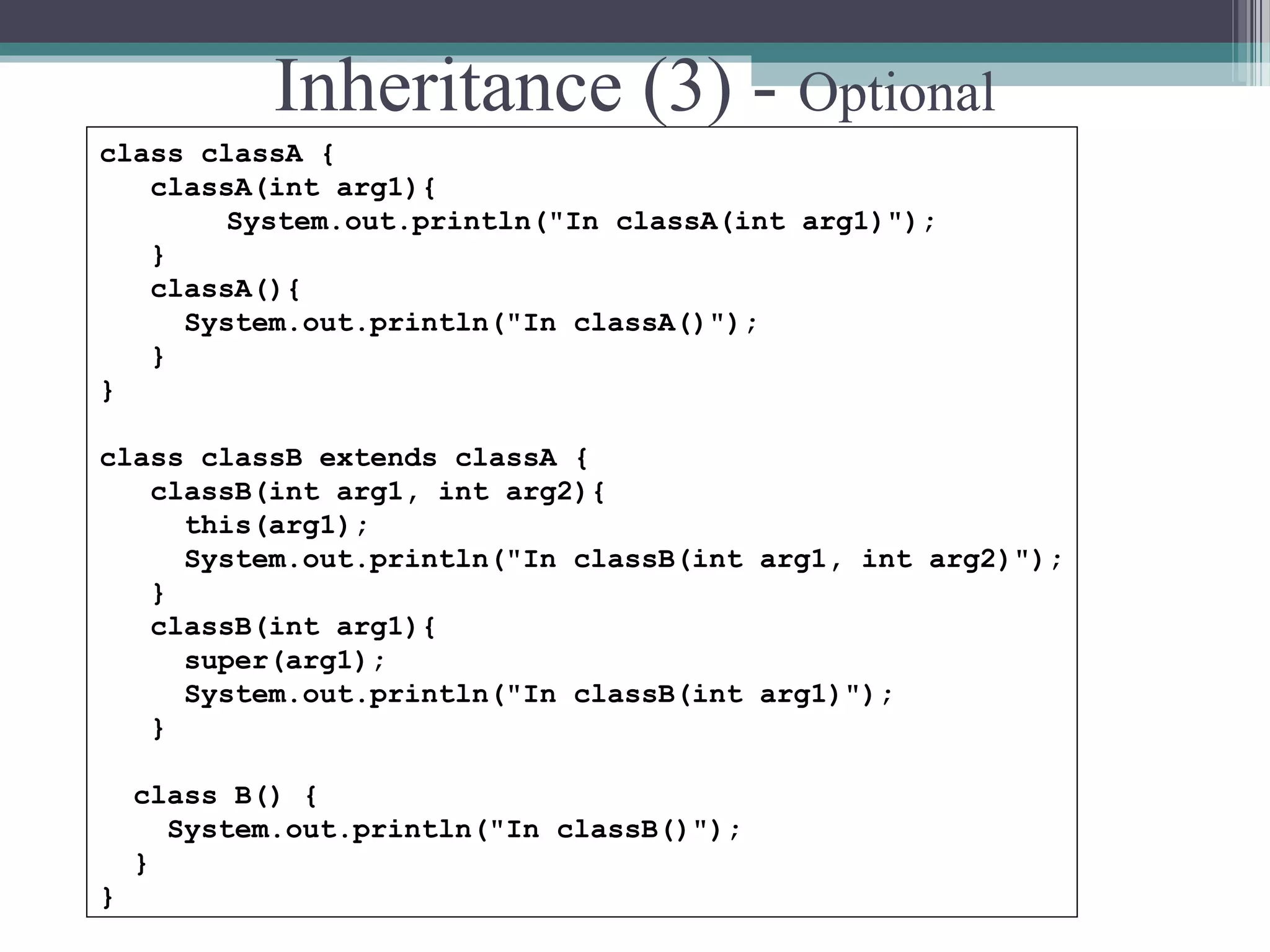
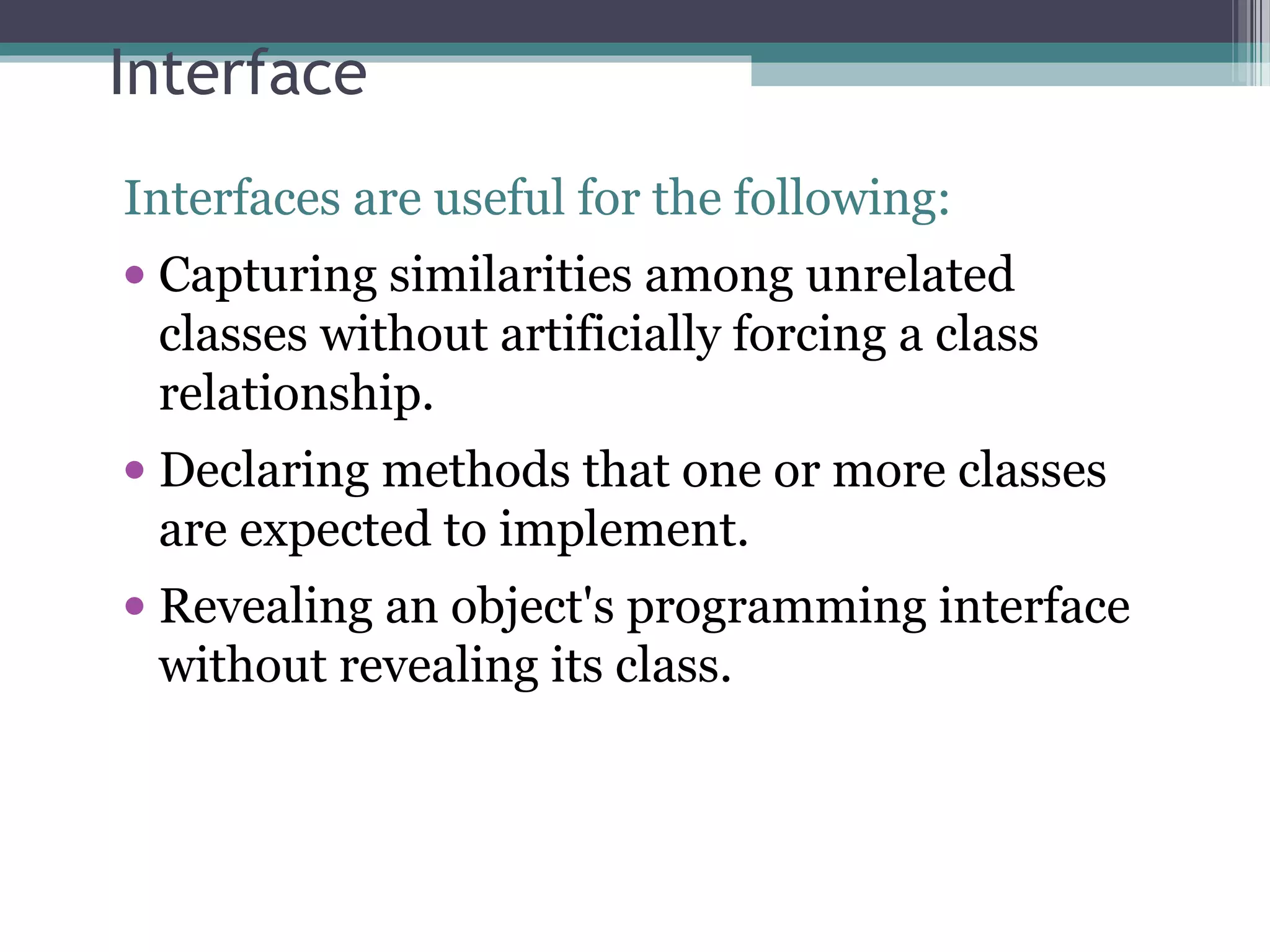
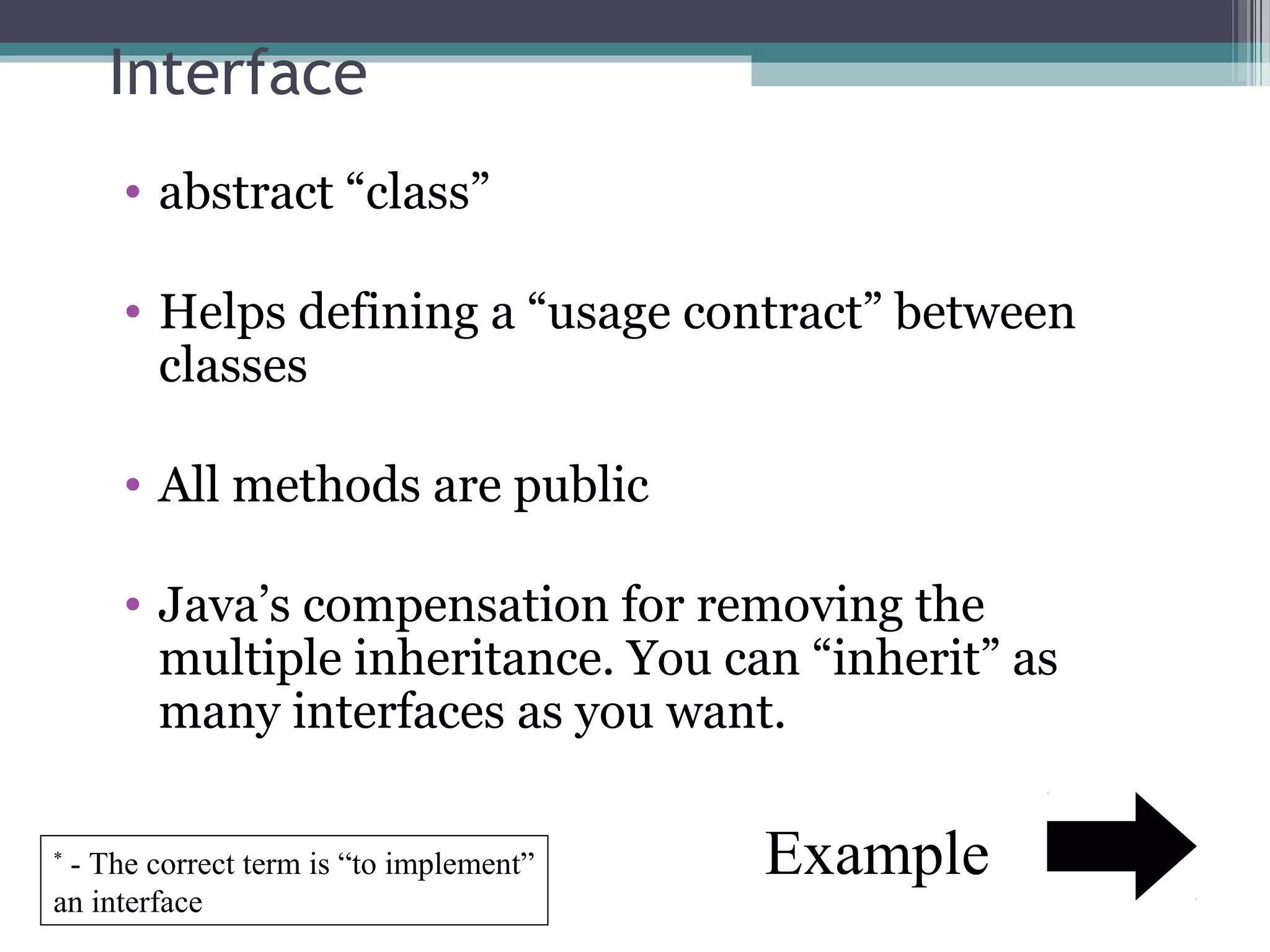
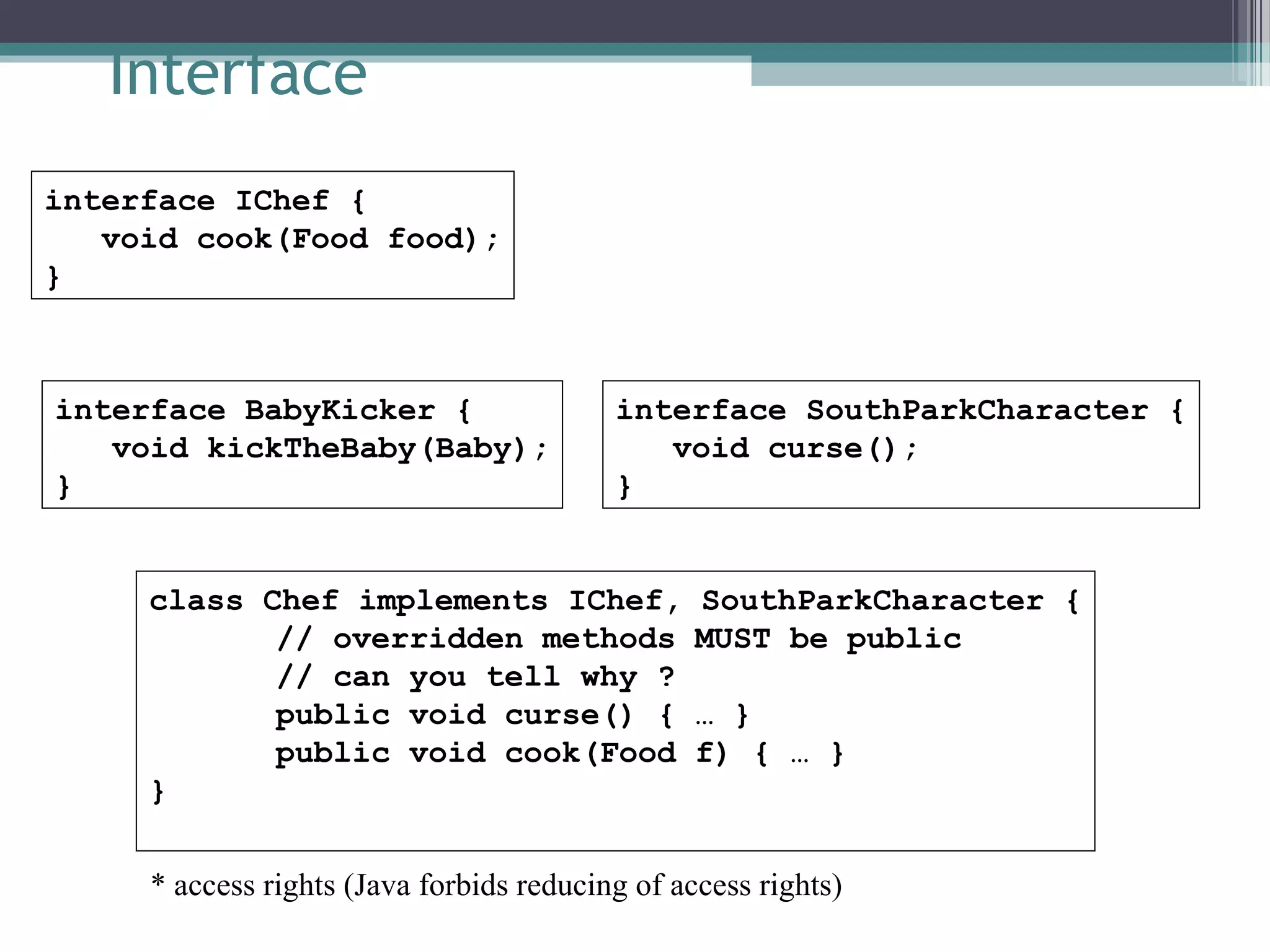
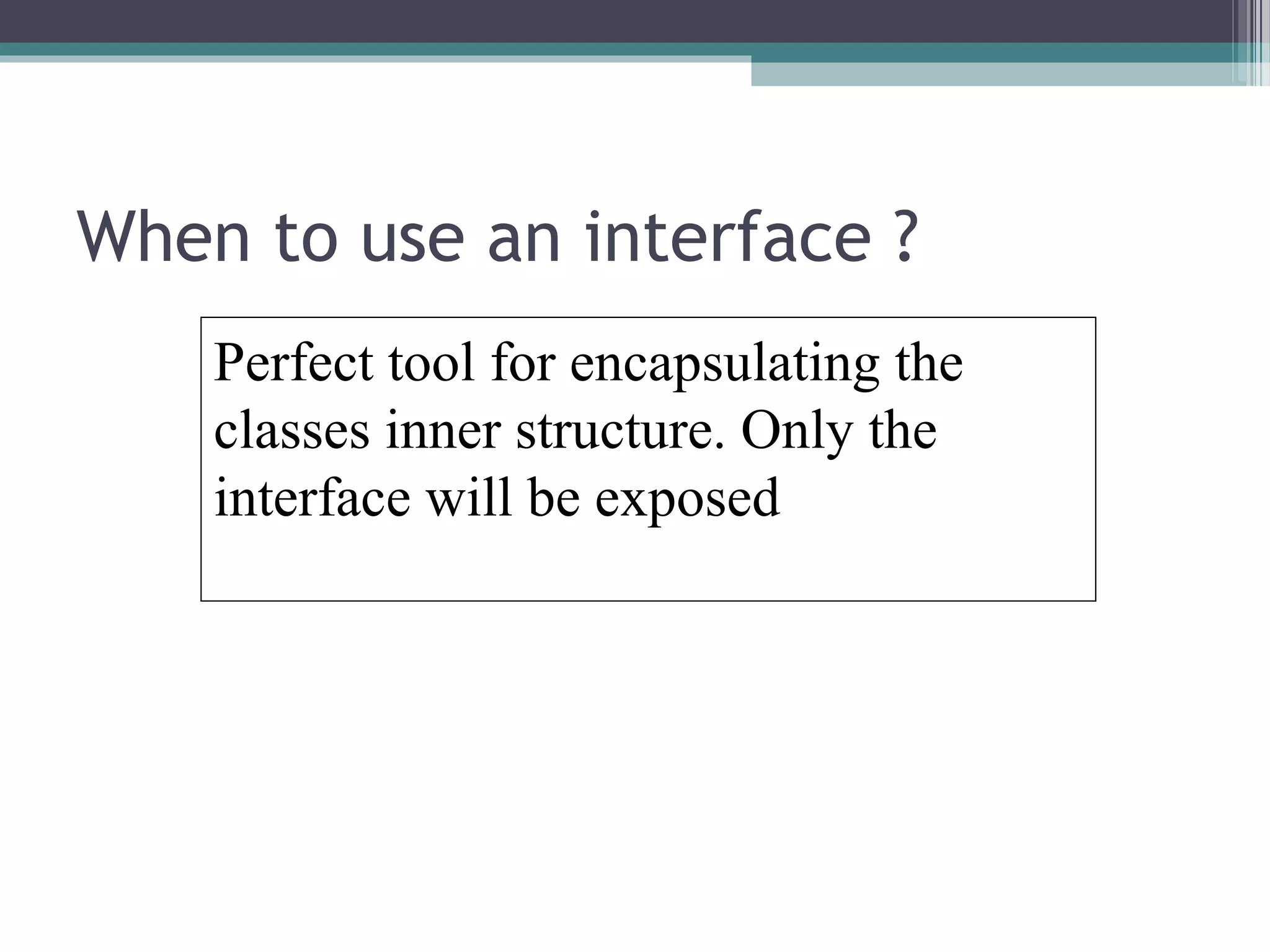
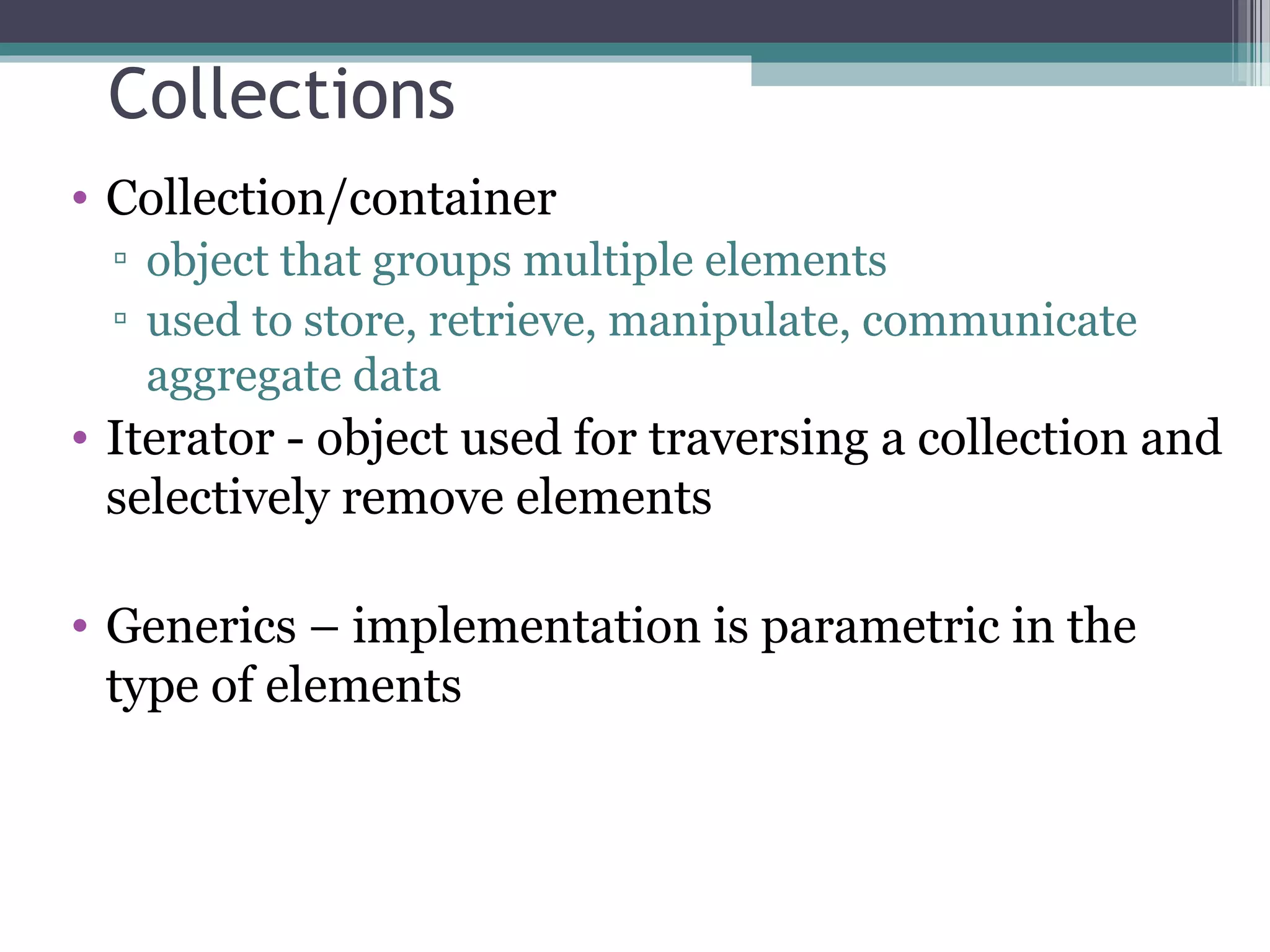
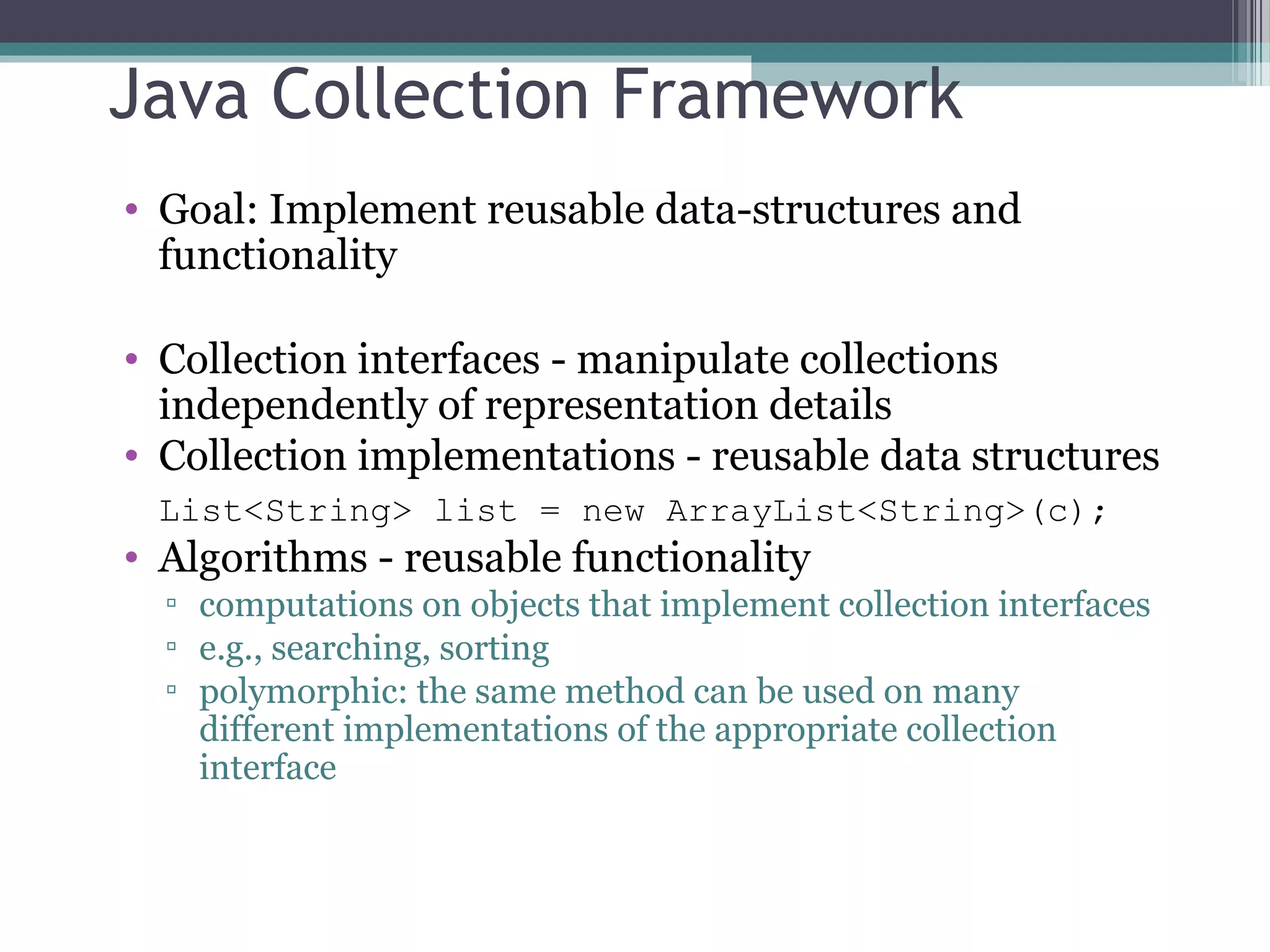
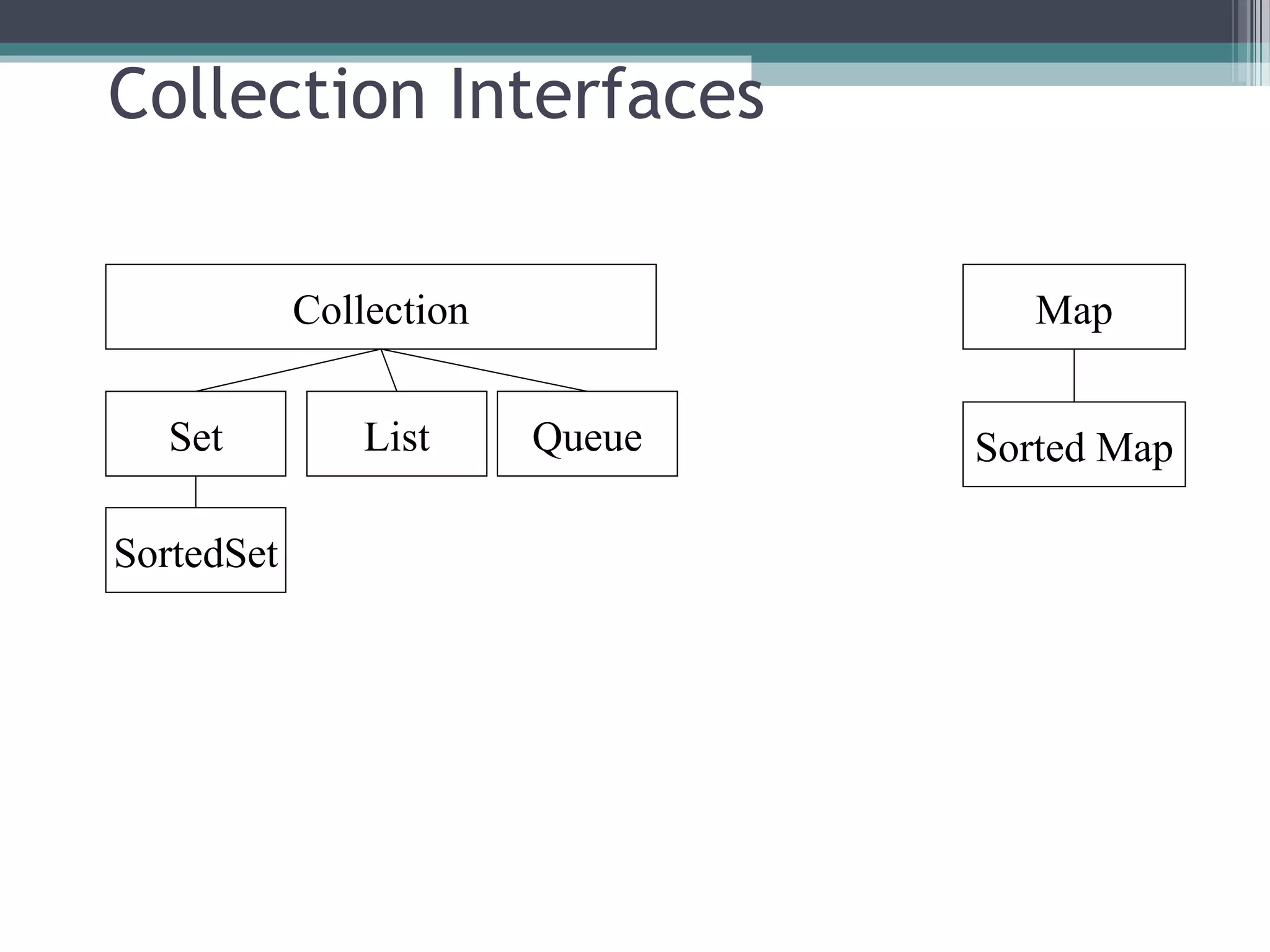
![Collection Interface • Basic Operations ▫ int size(); ▫ boolean isEmpty(); ▫ boolean contains(Object element); ▫ boolean add(E element); ▫ boolean remove(Object element); ▫ Iterator iterator(); • Bulk Operations ▫ boolean containsAll(Collection<?> c); ▫ boolean addAll(Collection<? extends E> c); ▫ boolean removeAll(Collection<?> c); ▫ boolean retainAll(Collection<?> c); ▫ void clear(); • Array Operations ▫ Object[] toArray(); <T> T[] toArray(T[] a); }](https://image.slidesharecdn.com/javatutorials-140512062011-phpapp02/75/Java-Tutorials-37-2048.jpg)
